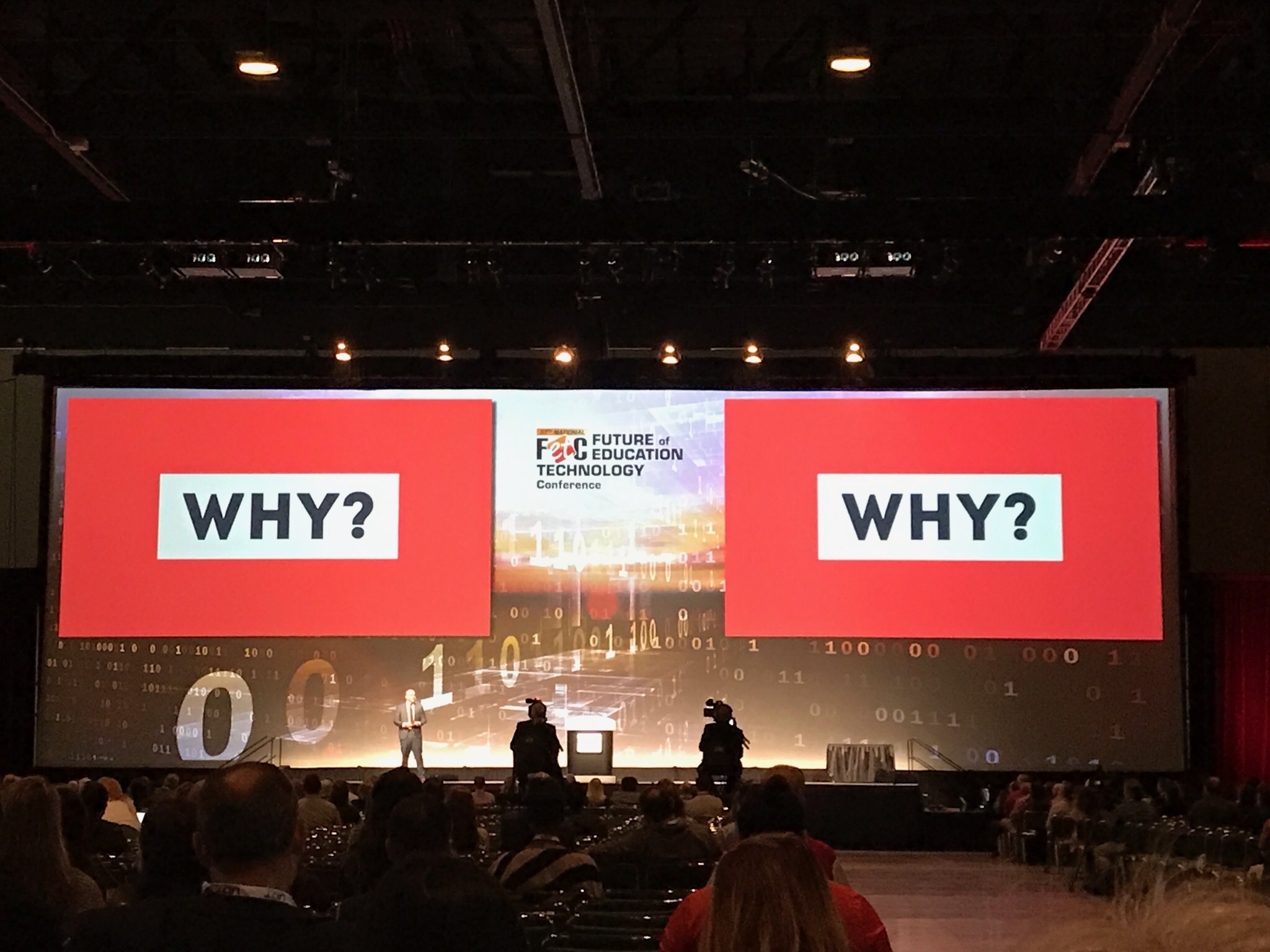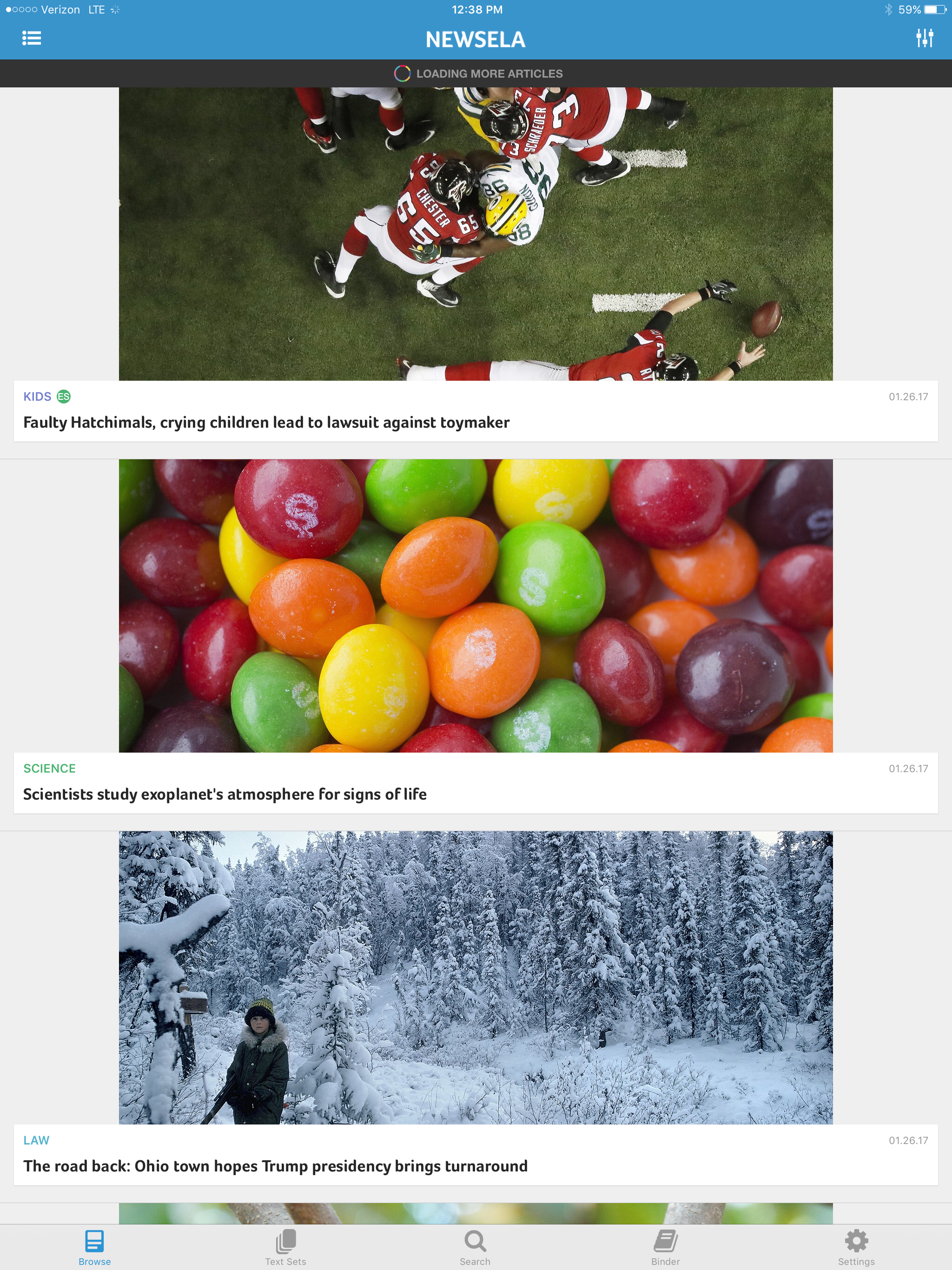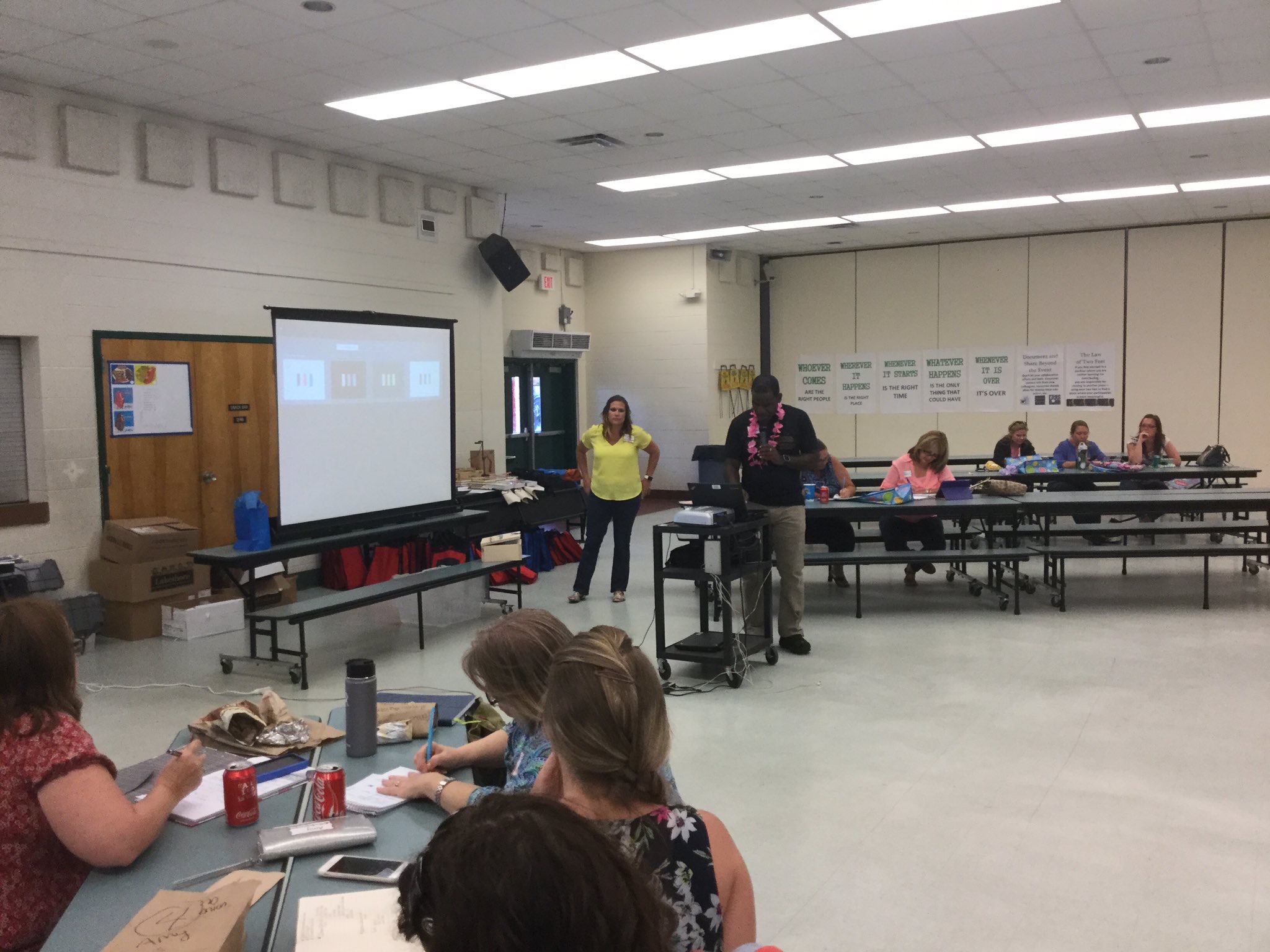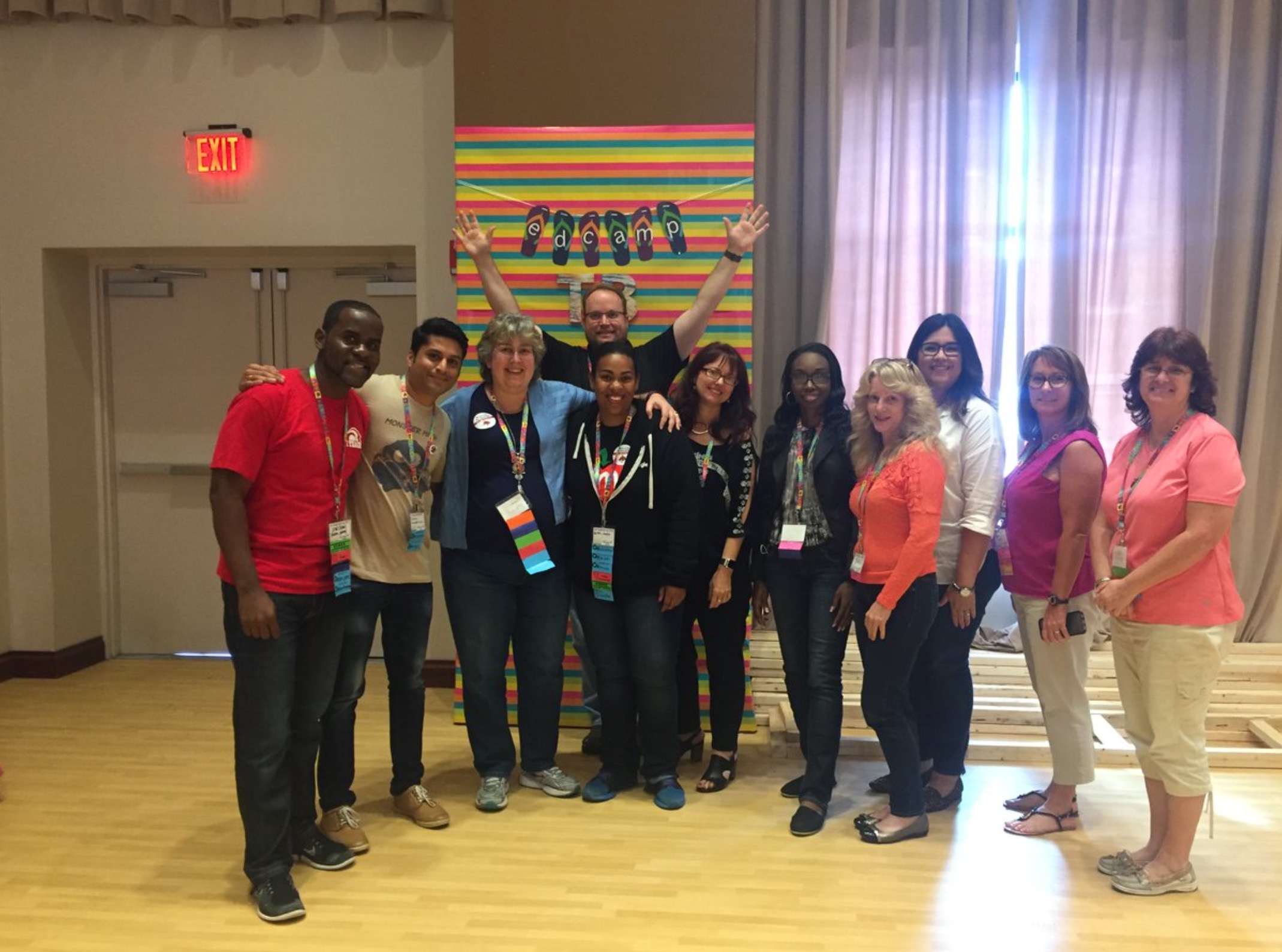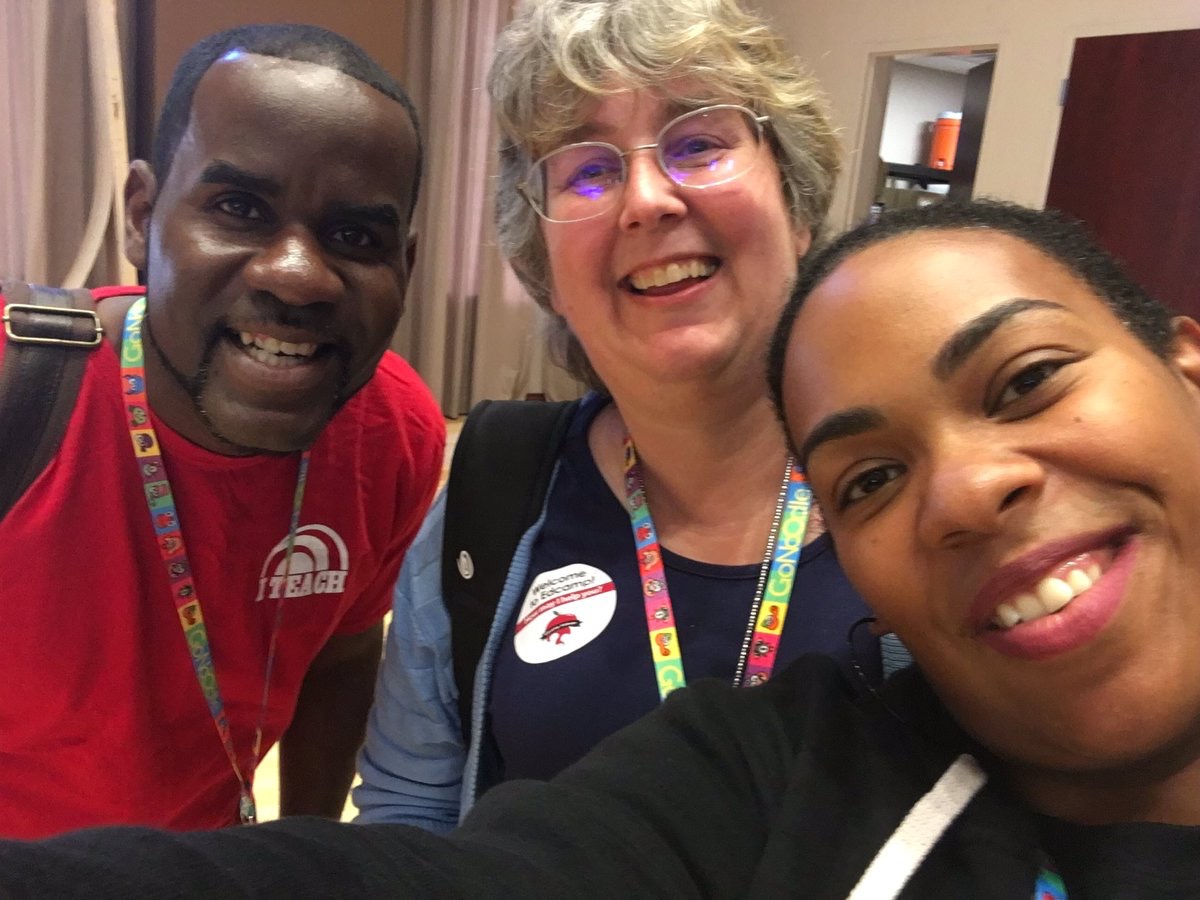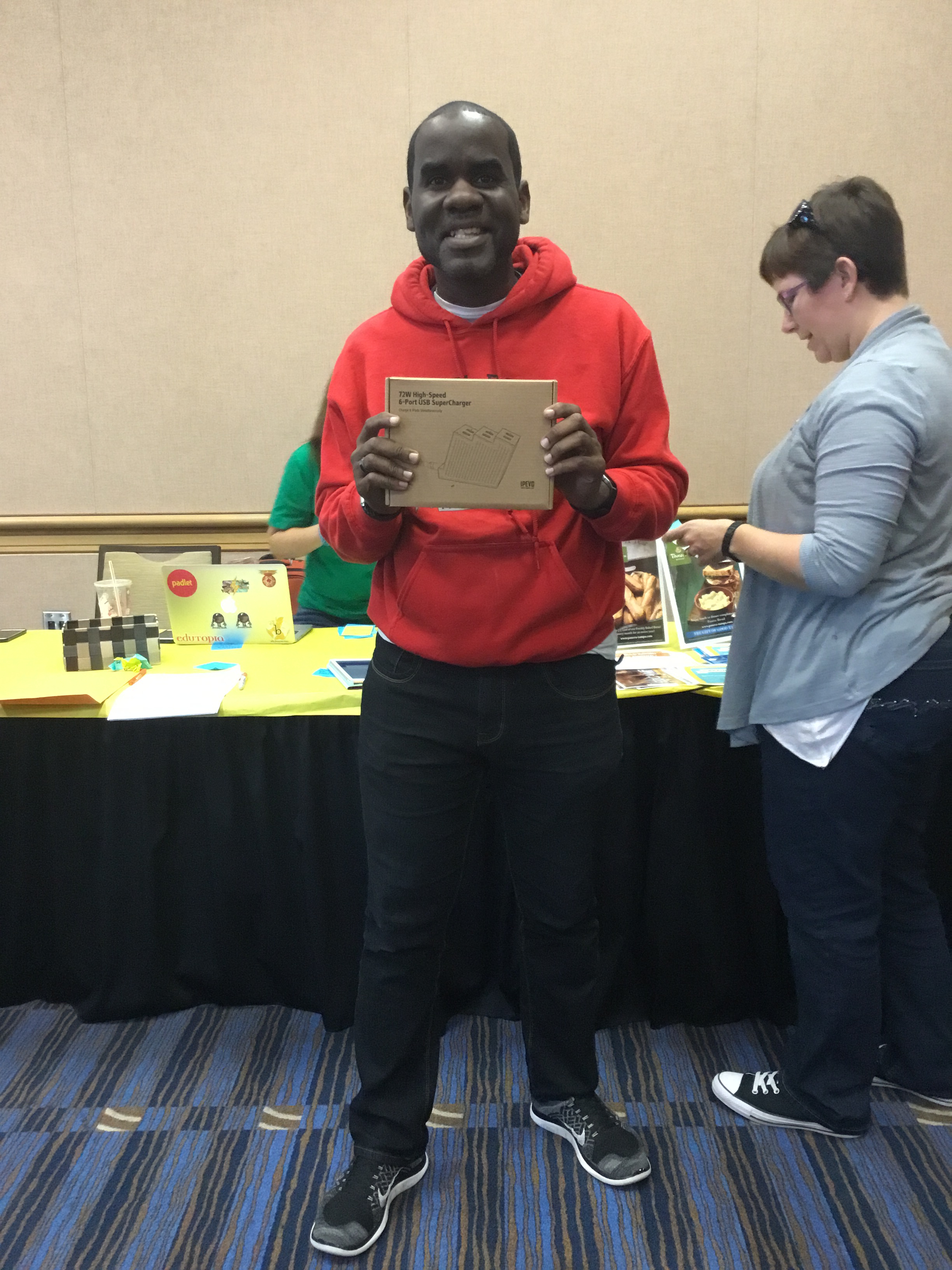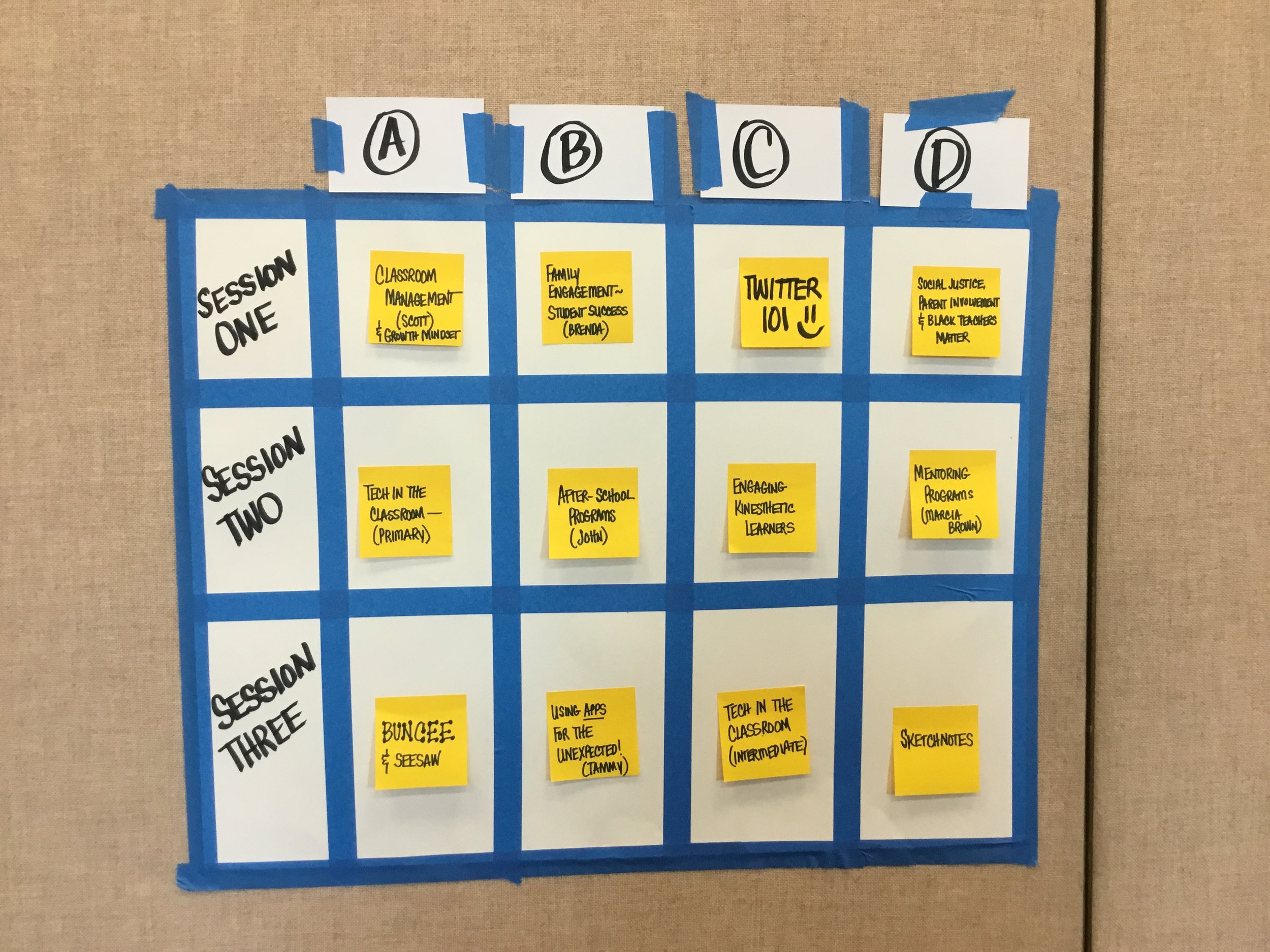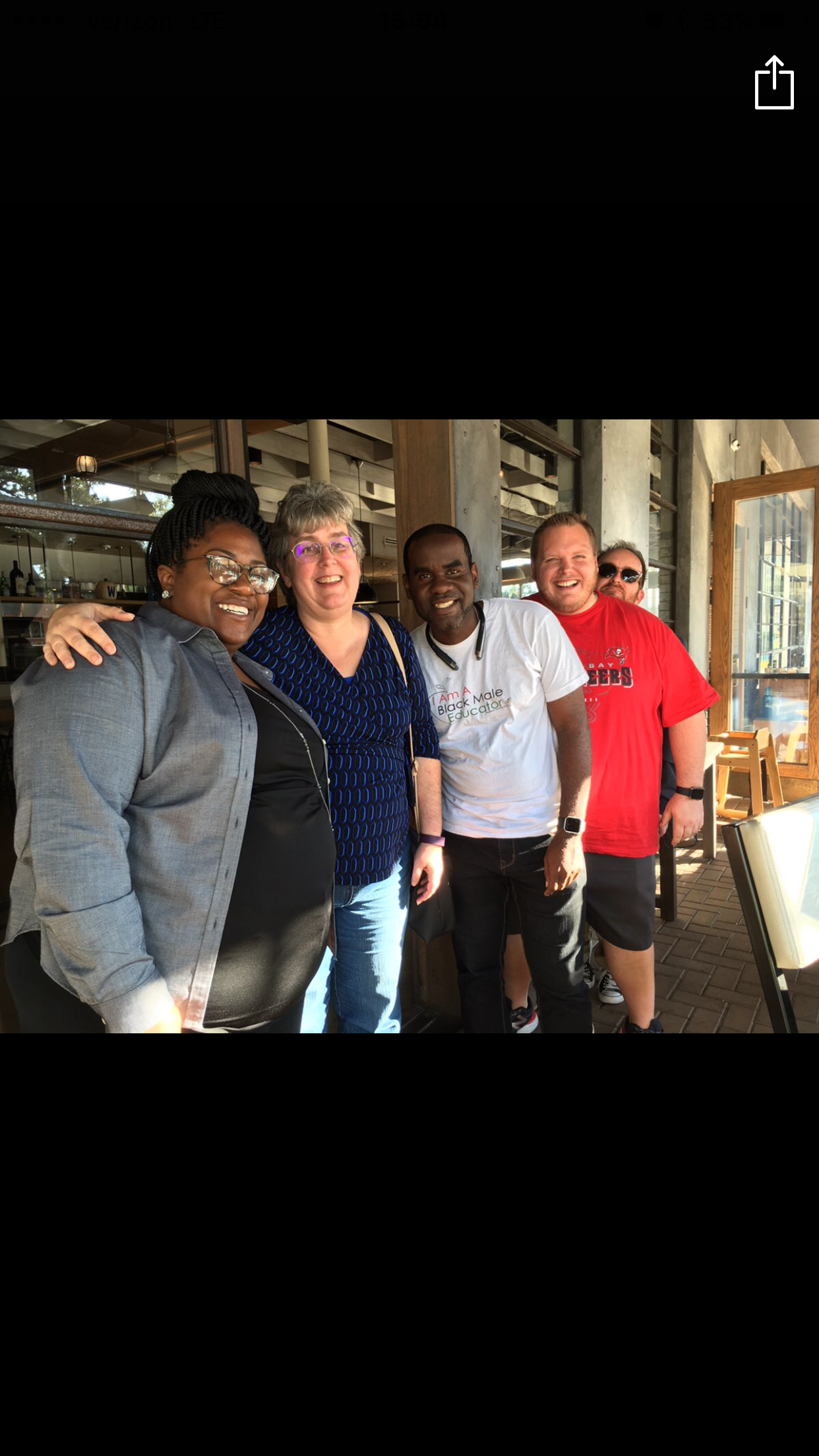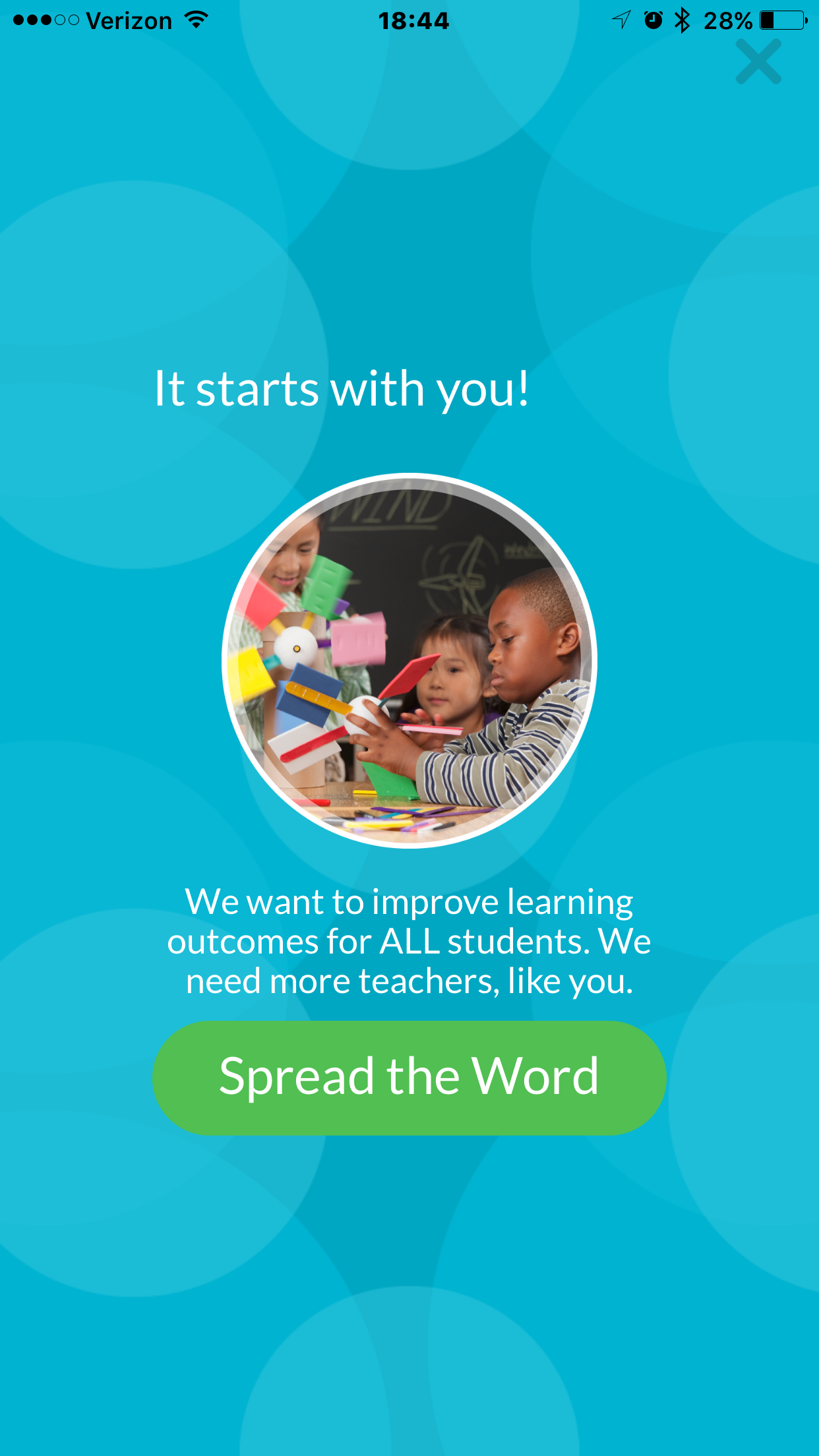Reflections on FETC (Future of Education Technology Conference)
I have been so busy trying to implement the strategies and tools gained from attending this conference that I am very late on posting this blog. The Future of Education Technology depends on us learning, knowing, implementing, allowing, embracing, and integrating. There was so much information discussed during this conference, from the keynote speakers to the poster sessions and from the breakout sessions to the many conversations and opportunities for sharing with educators from around the state of Florida and beyond. Below is an example of an activity used within a Language Arts classroom that combines the arts with writing. Google Slides allows students to bring these areas together in seamless display.
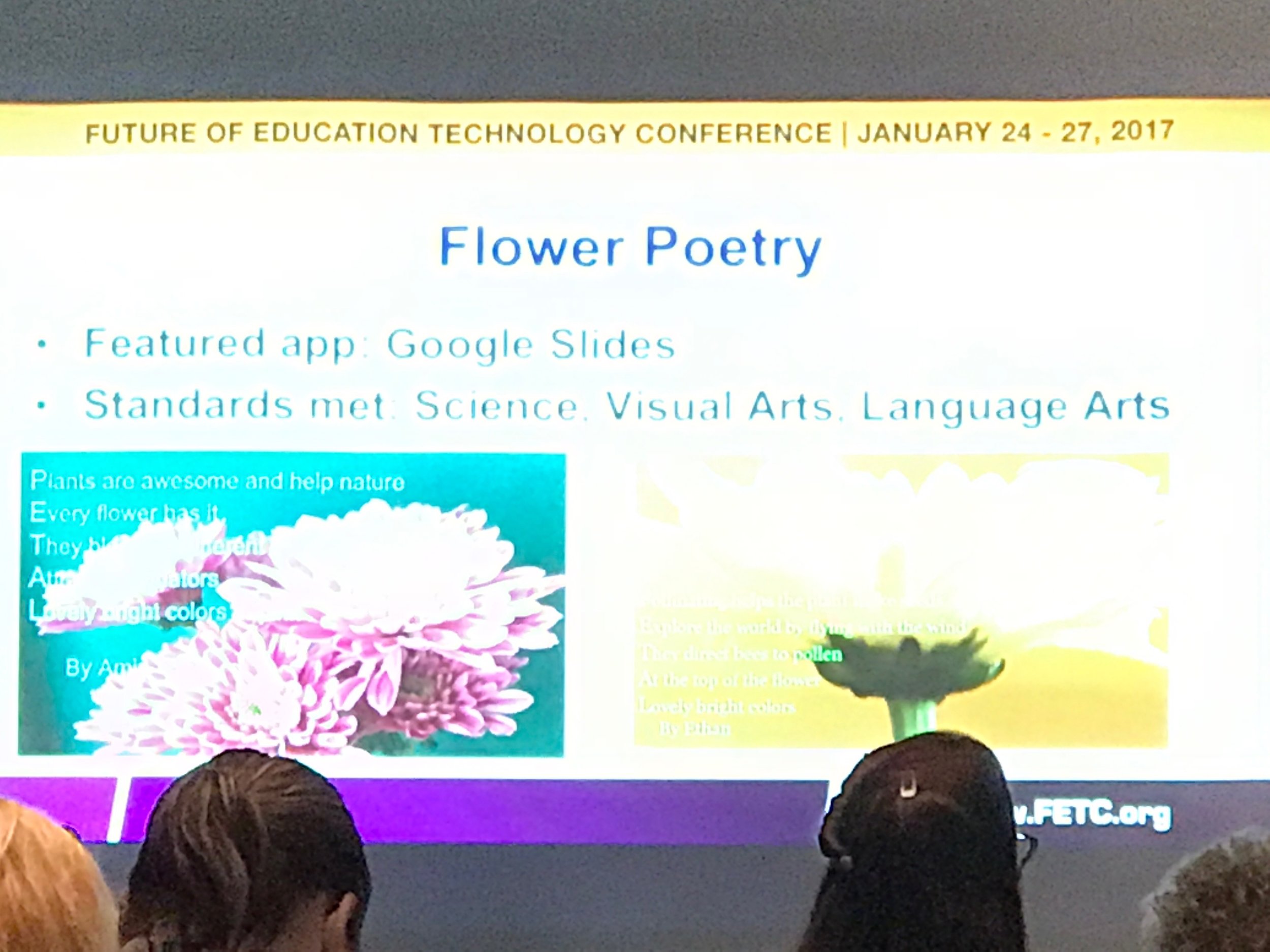
One of the greatest benefits and takeaways from the F.E.T.C. Conference was the understanding that technology can be integrated into any classroom and not only that, it should be integrated. The above visual identifies that way in which a school combined Science, Visual Arts and Language Arts into a cross-curricular experience. There are great benefits to connecting multiple areas of the curriculum so that students can understand these relationships, as well as learn in a variety of ways.

In this example, the presenters discussed a way to bring life to a biography. We certainly cover nonfiction reading as a part of ELA but why not make learning more engaging for students by integrating the technology component? In this example, students either created an image (using Sketchbook EDU), or found an image to to integrated into an app called Cha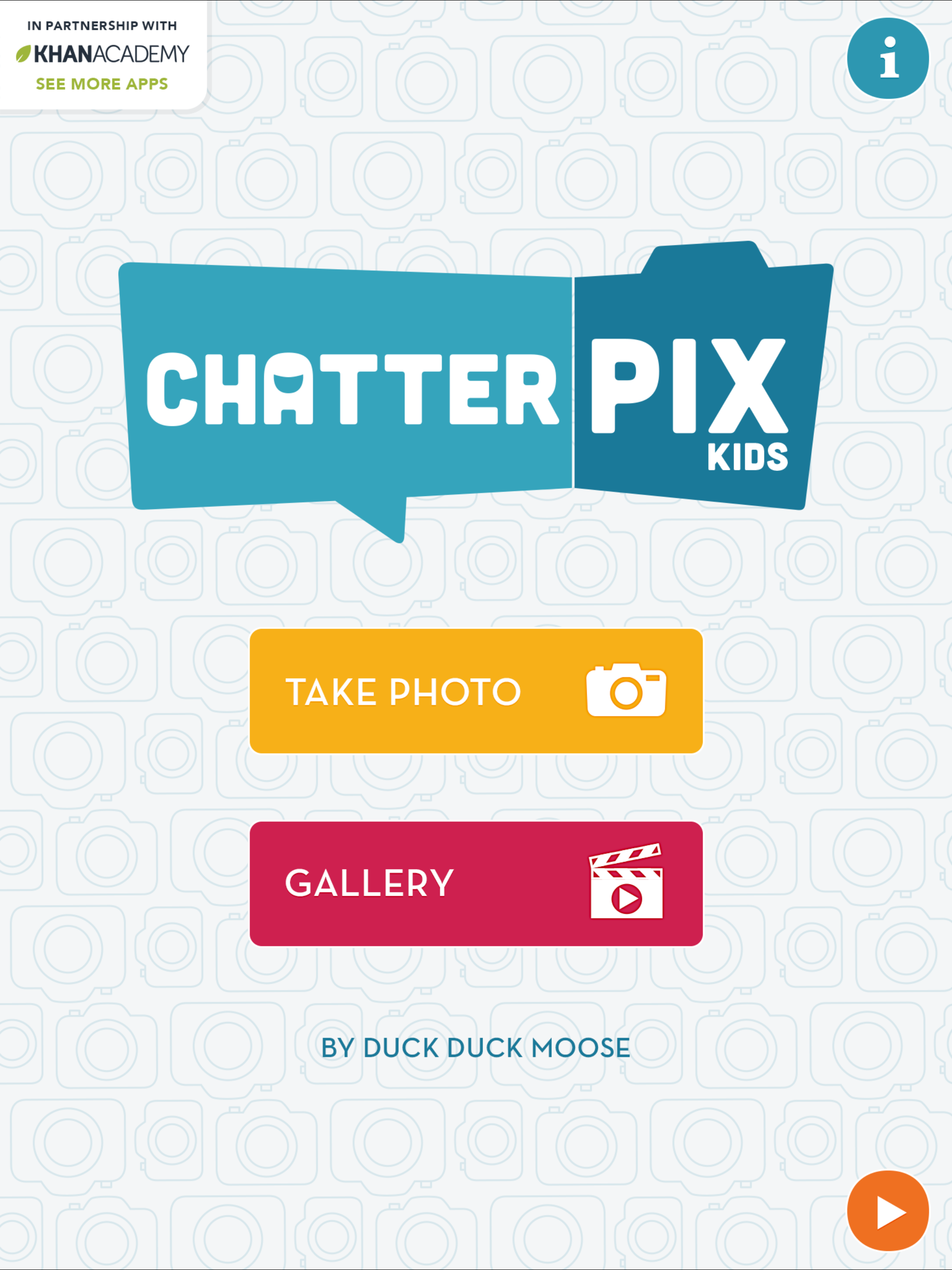 tterPix (screenshot pictured below).
tterPix (screenshot pictured below).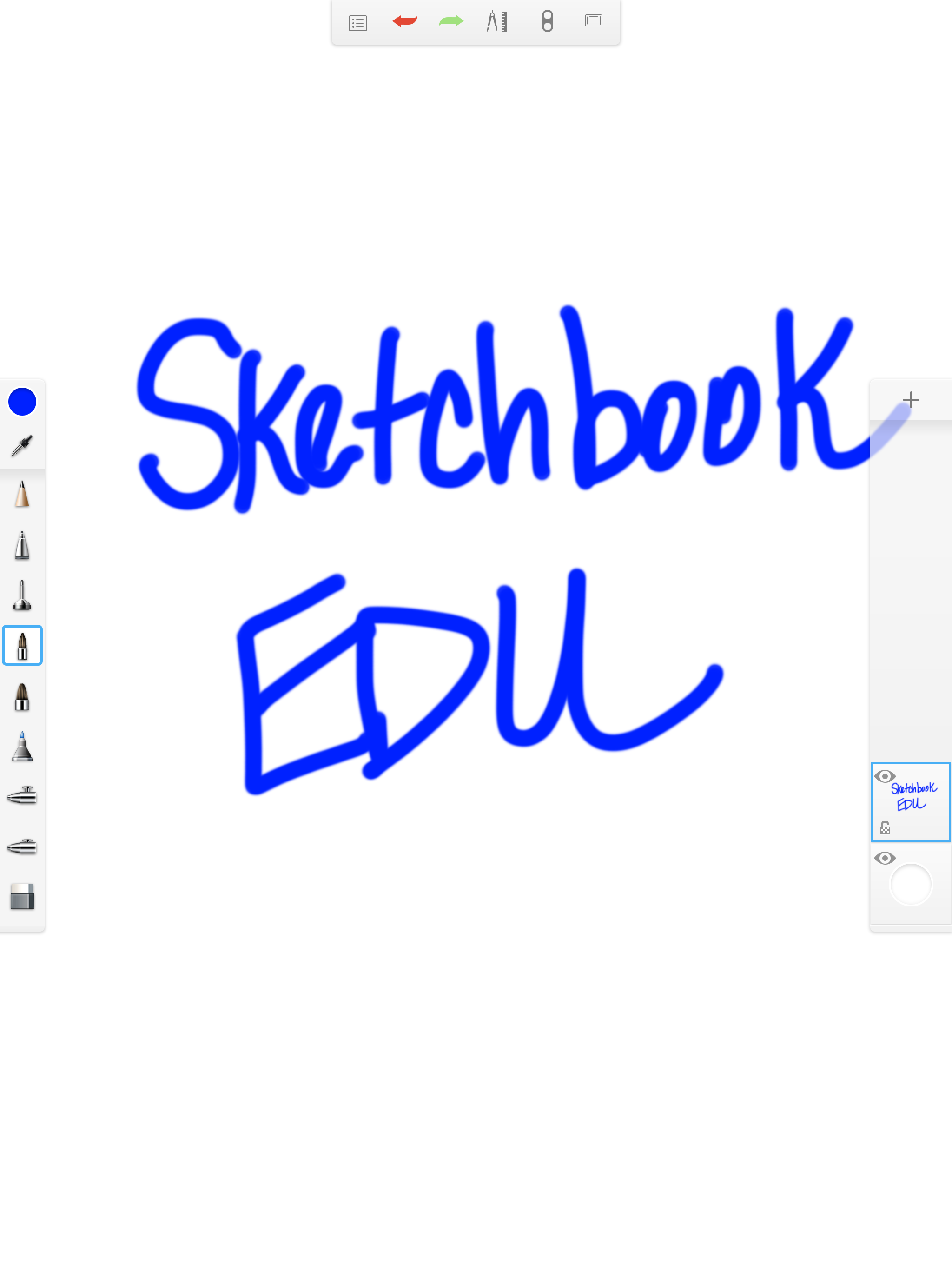
For example, if students were learning about Martin Luther King Jr, he or she might google search for a podium graphic, since it represents much of what Martin Luther King Jr. embodied in life. That graphic can be imported into ChatterPix and using coloring tools, colored over, to become a new image. See the video below, that was a bowl made from glass originally, transformed into Captain Granite.
[wpvideo XhOU0K7c]
EdTech Karaoke (below) was a fun time, as it brought out the singer and songwriter and artistic talents. It was so great to see so many educators who were not only concerned about their classrooms, but music and the arts as well.
The question "Why" should be asked when attempting to integrate technology into the classroom. We want the integration to have meaning for students and we can't just put an iPad in their hands and expect that they would not need guidance in its use. How can we make technology as meaningful as possible? (Consider why the technology is being used).
- Introduce a topic (Nearpod)
- Build understanding - (Google Earth)
- Apply learning (includes voice and choice) - iMovie, Buncee
Newsela allows students to read on an appropriate lexile level and if students require more scaffolding, they can navigate through and select a lexile level more appropriate for them. This is helpful for students as they learning the research process and there is a wealth of information at their fingertips.
What would any conference be like without interacting and engaging in excellent dialogue with other educators? Just as much as the sessions and the keynote speakers, these conversations allowed for rich learning experiences with lots to think about or consider.
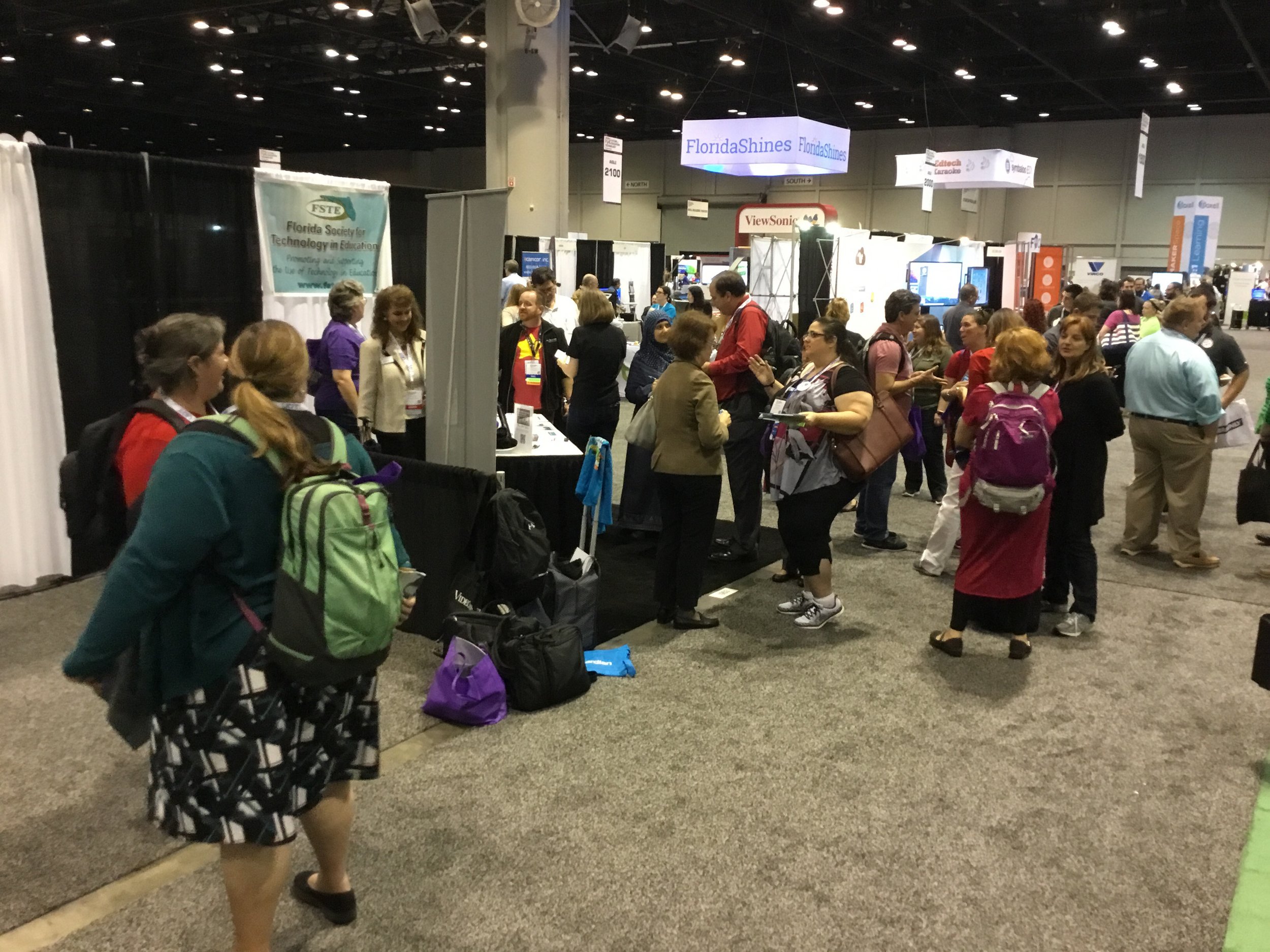 Below is a video that captures a few of the highlights from FETC with my voice in the background. I used this to present to teachers back at the school. It does not encompass everything but do enjoy. It's not about the technology, it is about what you do with it, the pedagogy. Yes! Let's not go backwards.
Below is a video that captures a few of the highlights from FETC with my voice in the background. I used this to present to teachers back at the school. It does not encompass everything but do enjoy. It's not about the technology, it is about what you do with it, the pedagogy. Yes! Let's not go backwards.
[wpvideo qnkBFI5f]
Michael Meechin shared that "The future of education is you." It can't be done without passionate educators who are excited to try new things, make mistakes, make everything a learning experience, both for the educator and the students and ultimately, keeping the students as the unique focus of every classroom.
For the Love of...
...the children, and everyone else for that matter. In a recent Edumatch conversation on voxer with Jennifer Bond, I was reminded of thoughts from a previous blog post titled "The Whole Student...The Whole Teacher." Jennifer Bond described a particular experience that ended with a student telling her "I've never had a teacher like you before." Suffice it to say that I am certain that Jennifer Bond's classroom is full of love, care, concern and protection for her students. It would be no surprise to me to hear her students express how "safe" they feel around her and in her classroom.
You know, I have always believed that the role of a teacher was MORE. It's easy to minimize that role, or find the perfect box to put it in, as if the role that each individual educator plays can be boxed up or limited. I think back to several students over the course of my teaching journey, all of which showed promise to go on and do tremendous things. Nevertheless, there was always a few that needed a little more of a push than others. There were some challenging ones that many would write off, pass by and ignore, because perhaps the behaviors expressed were not completely understood. No I am not stating that behaviors should not be dealt with. However, what I am saying is that there is at least a small possibility that the child in question needs you, needs someone, to care, and to care for real and to not just say it, but to demonstrate it.
Be a Light
In 2005-2006, I taught fifth grade at a wonderful school in the Orlando area, and the school was known for its community, parent involvement and phenomenal administration. I recall one student in particular, that was bit of a challenge for the entire team I taught with. There were various behaviors that often meant he was reprimanded and sent out of the classroom or even written up. Most behaviors were disruptive and in some cases defiant. This was my first full-year in the classroom, but something inside of me took a risk, a chance...I tried to help him.
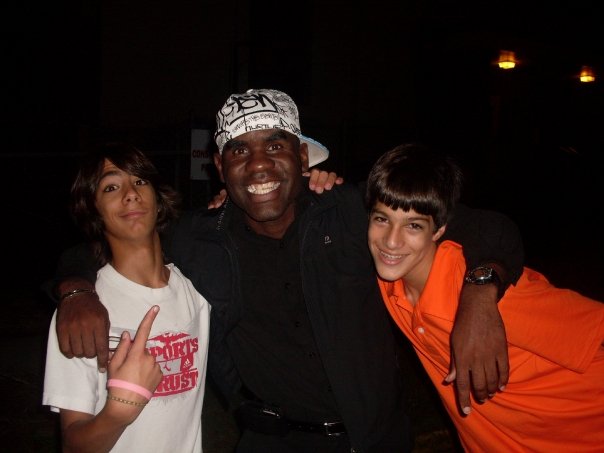 Back then, I may not have attached the vocabulary with the actions that I demonstrated, but I built a relationship with him. I am still in contact with this individual today, so much so that I am, and have been his uncle for all these years, non-biologically, but real none the same. Was this kid perfect? Was I perfect? Not by a long shot, but one thing is certain, this kid loves me to this day, and reminds me that it was because I took a risk, the chance...I reached out to him and developed relationship. He hasn't had a perfect life, but he knows that he can rely on me and that motivates him to do the best and be the best that he can.
Back then, I may not have attached the vocabulary with the actions that I demonstrated, but I built a relationship with him. I am still in contact with this individual today, so much so that I am, and have been his uncle for all these years, non-biologically, but real none the same. Was this kid perfect? Was I perfect? Not by a long shot, but one thing is certain, this kid loves me to this day, and reminds me that it was because I took a risk, the chance...I reached out to him and developed relationship. He hasn't had a perfect life, but he knows that he can rely on me and that motivates him to do the best and be the best that he can.
Connected Early
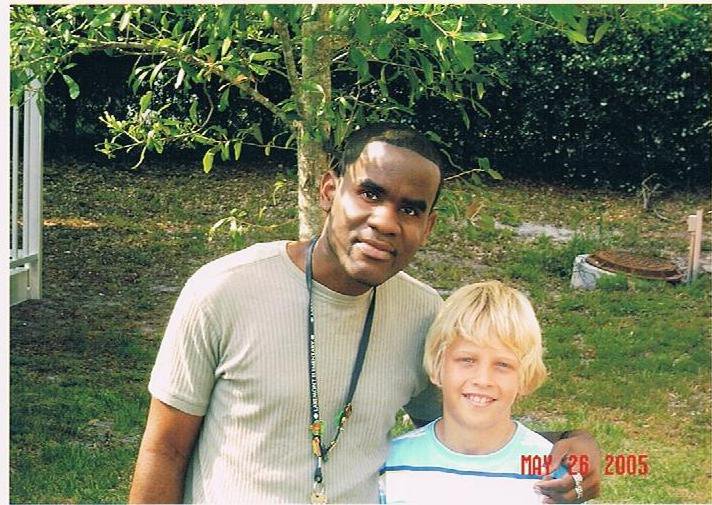 The student pictured above one of the first students I'd taught and again, I am still in contact with today. He connected with me early on and called me his favorite teacher. Knowing him today is the proof that there is great value in developing lifelong relationships with students, because you just might be the reason why they are motivated to succeed in life.
The student pictured above one of the first students I'd taught and again, I am still in contact with today. He connected with me early on and called me his favorite teacher. Knowing him today is the proof that there is great value in developing lifelong relationships with students, because you just might be the reason why they are motivated to succeed in life.
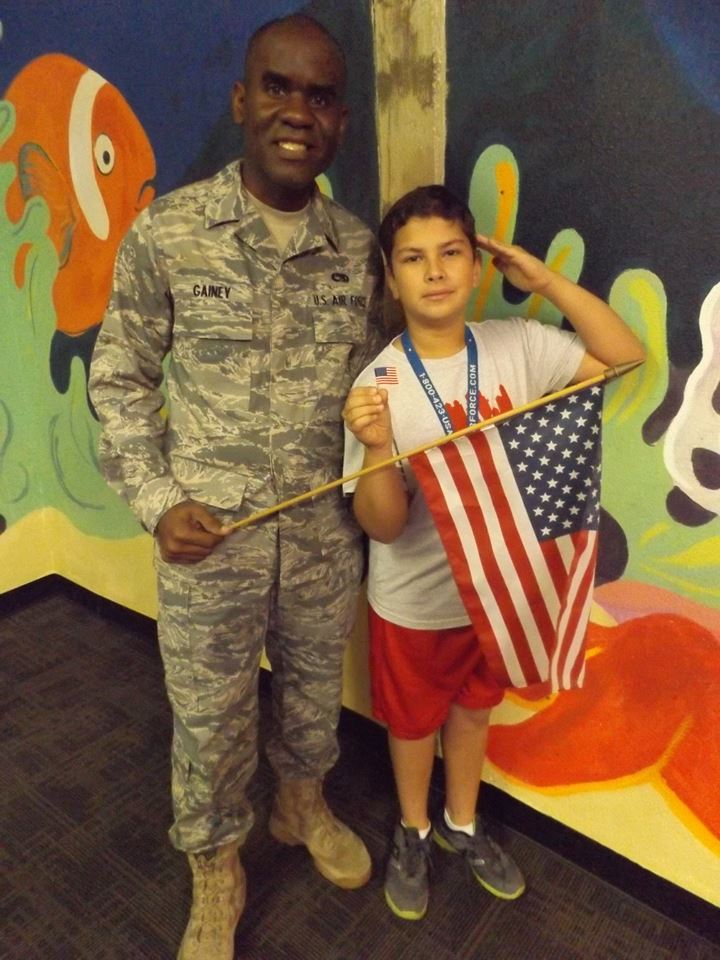
Empowering Them
The student pictured on the right alongside me is a fierce student who has dreams and desires to pursue a military career and is currently involved in the Civil Air Patrol. The veteran in me connected with his passion. I have had this student, now an 8th grader, come back to my class to teach students things about being part of the military that he has learned. In addition, one of my air force friends (who really is my little brother) did a Skype session with my class on Veteran's Day a year ago and this student was invited in to experience it and ask questions and learn even more. He was excited to learn about what life was like being in a deployed location. SSgt. Elrod was deployed to Japan at the time and so graciously agreed to Skype with us, it being 10:00 at night where he was, and 9:00 am here in the US. He even appeased me by being in uniform. It was a learning experience for all students, and they were so curious as to how he knew me and our experiences together serving.
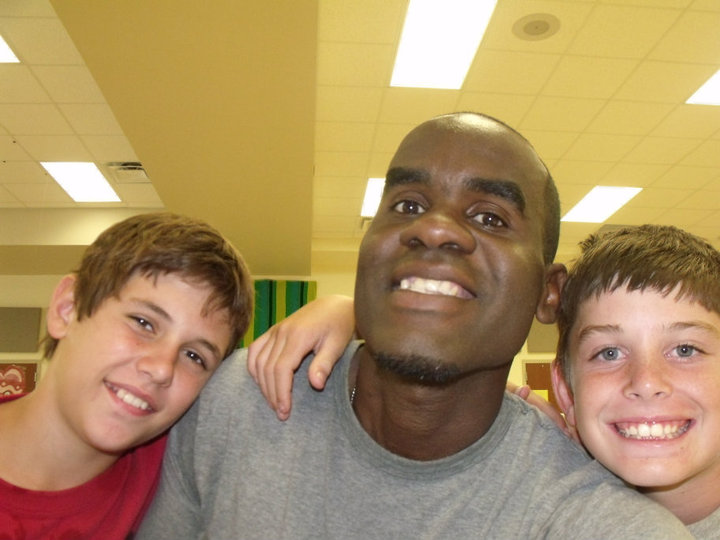
These two students were like birds of a feather. Of course they are now about 20, but literally went everywhere I went, and honestly it's because they knew that I'd look after them, protect them and care, sincerely. I have great relationships with their parents still today and of course they knew me very well. Kids are excited to be around you, learn from you, share their experiences and thoughts with you, when you give them a reason. I am so glad that I didn't stay inside of the box. I often think back on the number of students that I've taught. I consider it an honor to be intentionally impactful.

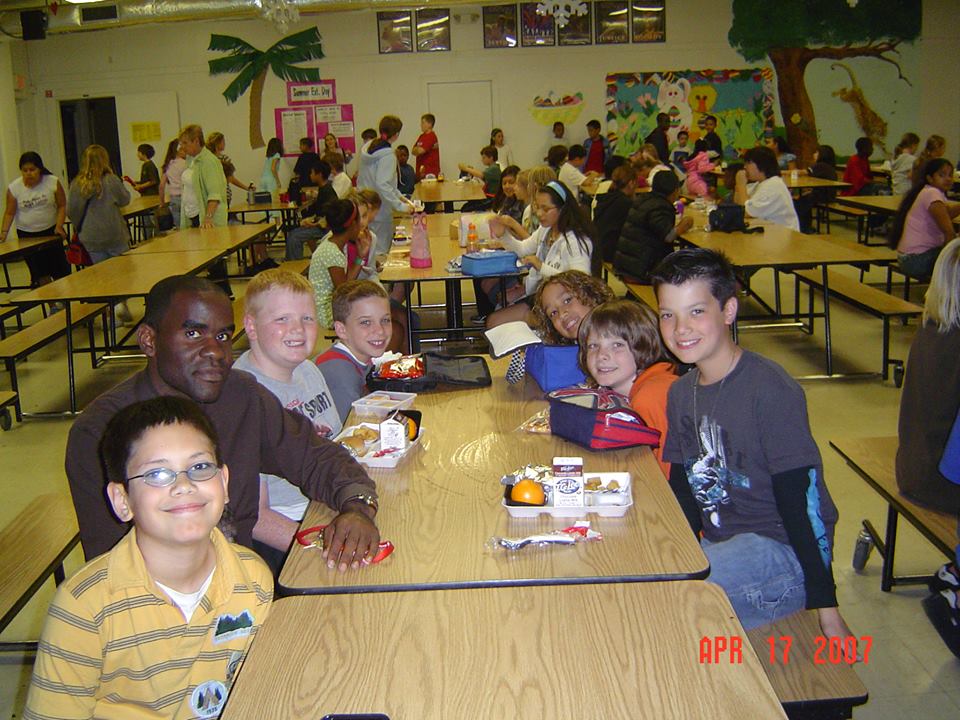 It's winter break but my kind continues to think and work to be better and do better, not just for myself, but with my students in mind and to continue to be progressive. The PLN I am honored to be a part of empowers me to never become STUCK or STAGNANT, because at that point, I am no longer any good to my students. I welcome any comments you may have about this post. Thanks for reading!
It's winter break but my kind continues to think and work to be better and do better, not just for myself, but with my students in mind and to continue to be progressive. The PLN I am honored to be a part of empowers me to never become STUCK or STAGNANT, because at that point, I am no longer any good to my students. I welcome any comments you may have about this post. Thanks for reading!
Mischief Managed.
I solemnly swear that I am up to no good! You may be very familiar with the title of this blog post, and if not it is a phrased borrowed from J.K. Rowling's Harry Potter and the Prisoner of Azkaban. I am definitely grateful for 2016 and all of the things that have transpired, the good, the bad and the ugly.
The Year of Firsts
I have to say that so many things happened this year, many of them for the first time. Suffice it say that sometimes it just takes that first step and then taking that step leads to additional steps and before you know it, you are immersed in the teaching and learning experience. That is exactly what happened to me and as you read through this, you will see what types of things it has led to. I am truly grateful to not be an annual learner, or a weekly learner, but a lifelong learner. I do not want to ever stop learning.
Black History Teacher Nominee - January 2016
I was honored by a few parents as they each submitted a nomination to the state of Florida on my behalf for an Outstanding educator award. Mind you I was not selected as the recipient, however it spoke to the work that I do daily in the classroom and the degree to which parents notice, not just in what they see you do, but how their child's lives are transformed as a result of your diligence, passion and eagerness to help. I was moved by the nominations and received copies of them all and will keep them.
Blogging Began - 5/2016
I'd heard so much conversation about blogging around this point in the year and had to respond. Of course the immediate question in my mind was where to find time to "fit" blogging in, and I also questioned its purpose. Now that is not to say that I have not ever written things down, but specifically, the writing I had done were poems, stories, songs and journaling that I tended to keep to myself. Long story short, I began to understand the value of a blog post as a means to share with others your experiences, findings, "aha" moments and "the stories" we write through our lives. So my blogging began to take shape when I realized that other people actually wanted to read what I'd written. They actually cared about the insights and anecdotes I'd picked up along the way, enough to take the time to read and in some cases, respond. The rest as they say is history because I have posted several times since then and although this is the first post after a bit of a break, I enjoy the blogging and now use it with my students in the classroom.
Just as it helped them to establish community amongst each other in the classroom, through an electronic platform and interaction there, it has helped me to grow and connect with others and enrich myself through developing a PLN. I couldn't always officially say that I'm an author. But today, I can confidently state that I am, alongside so many "greats" in the education world. Through EduMatch we have pulled a phenomenal project together. So, if I had not started "small" with blogging, I may not have ever developed the confidence in what I had to say, to take part in a bigger writing adventure. Now, I am excited to pursue writing further.
EdCamp Magic - 6/4/2016

EdCamp Magic was my first EdCamp ever that I'd attended. Prior to 2016, I hadn't even heard of an EdCamp and was basically ignorant of what they were and what they had to offer. But through my voxer and Twitter participation and connections with these awesome individuals, some of which are pictured in these photos, I learned. I made my way to Windermere Prep for what I would say was the best "first" experience ever. I met several of the people face to face that I'd interacted with on Twitter for a while, including: Sarah Thomas (founder of EduMatch), Tammy Neil, William Jackson, Zac Leonard, Alex Stubenbort, Dan Koch, Fran Siracusa, Jennifer Williams, and Amber McCormick.
First Tweet & Talk Edumatch - 6/5/2016
I participated in my first Tweet and Talk, which brings together Twitter and Google Hangouts live on air. I was quite excited to join in and at the moment I do not recall what the topic was. However, Sarah Thomas hosts these weekly and moderators guide the discussions. Panelists sign up to take part in these tweet and talks and I am better because I got involved.
ST4T Conference - June 2016
The picture below are some of the phenomenal individuals who attended the Superior Tech for Teachers conference at the Plato Academy in Clearwater, FL. It was two days filled with learning and exposure to technology. Shout Out to Clarence Tan who shared his math platform with educators at this conference.
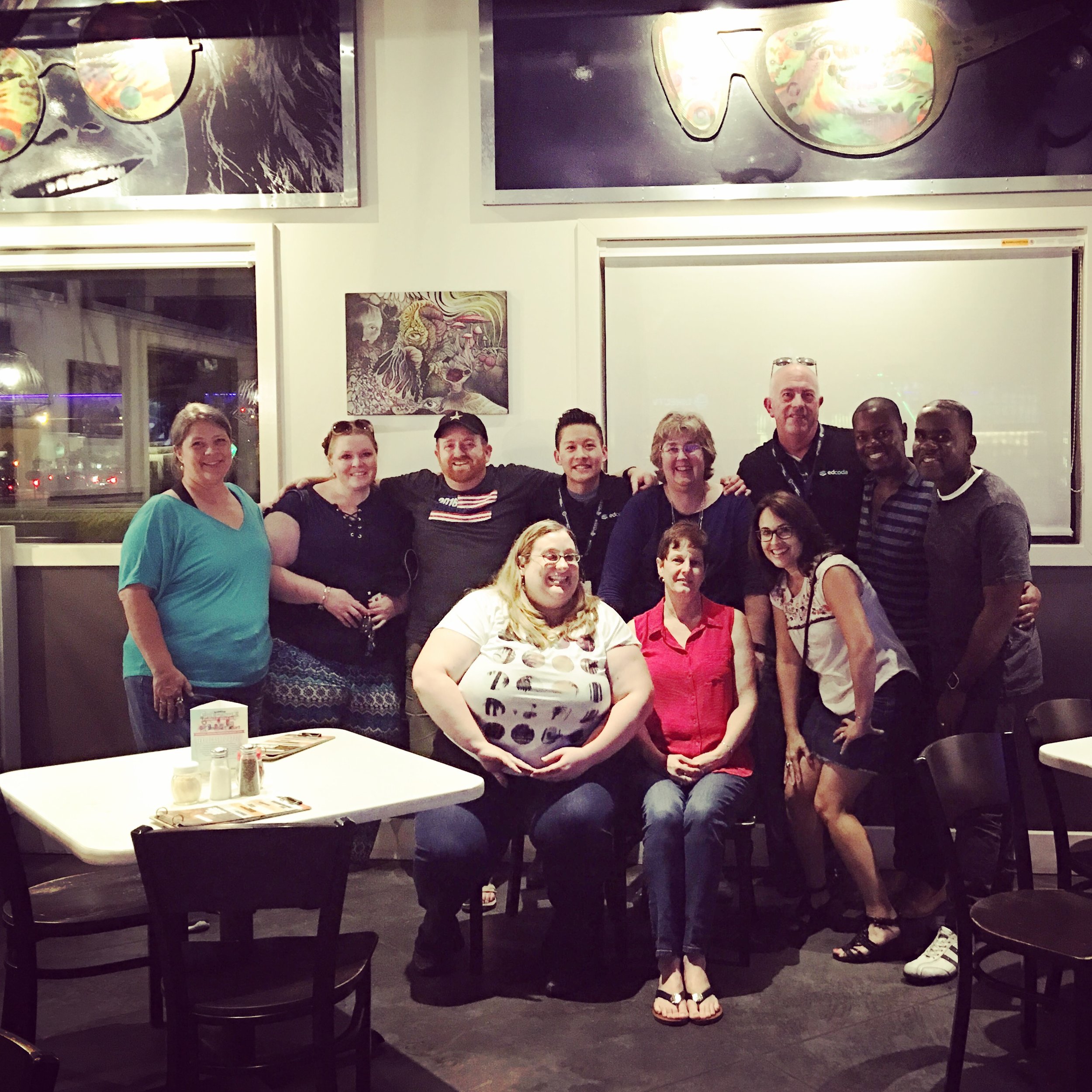
EdCamp Volusia
EdCamp Volusia is where I met Kimberly Michelle Martin for the first time face-to-face, but had interacted quite often via Twitter and Voxer. This picture was taken during an App Smash where various educators shared great apps or tools that other educators should use or could use as tools in the classroom.
EdCamp Putnam
Edcamp Putnam was my first time taking the step to facilitate a session or present something to the educators who attended. It's funny how nervous you are when you have to stand in front of others, not knowing how things will go.
In the picture captioned "EdCamp Putnam", I am demonstrating how to use a few apps available on the iOS devices. My friend Kim Martin is to credit for this picture as she is an incredible supporter and works in Volusia County Schools.
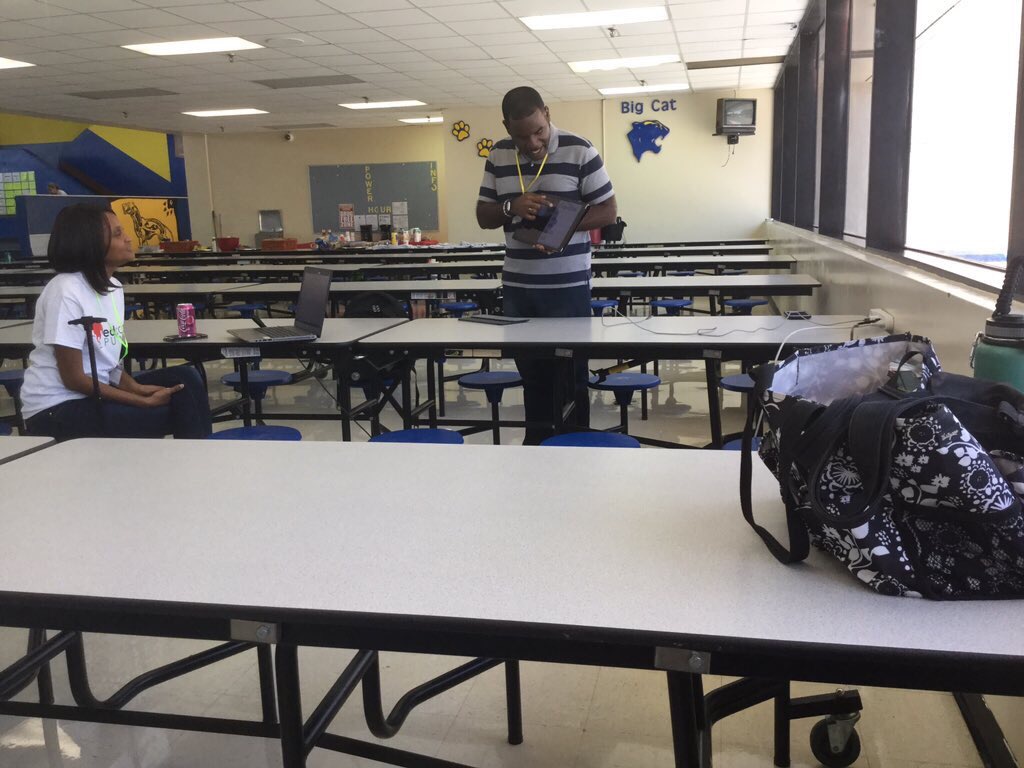
First Pass the Scope - 7/21/2016
PasstheScopeEDU was founded by Valerie Lewis as a means for educators around the globe to share the learning and insights with other educators and students, removing the walls that often serve as barriers to learning. This was my first opportunity to get involved and I have to say, the idea of sharing with a global audience and learning from those in their respective areas, countries, cities or states, was engaging, not to mention unifying.
Fresh Grade Webinar Panelist - 10/6/2016
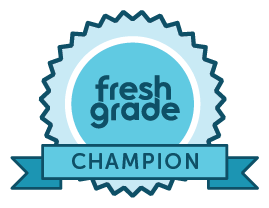
I had the tremendous honor (again a first) to be asked to participate as a panelist in a Fresh Grade online webinar, to highlight my experiences in using it as a tool to bridge school and home, individualize learning for students, as well as increase communication between parents, students and the teacher. Alongside another panelist, we spoke of the ways in which we have embraced Fresh Grade, and the tips, tools and tricks by which we are able to accomplish tasks. This was the first time that I'd ever been asked. The presentation was a success and even during the process, I learned from Rob Heinrichs about his approach to the Fresh Grade platform.
I will eagerly support something I believe in. I suppose the focus then is to make me a believer. I am a believer in the Fresh Grade application as a learning management system. It is easy to use and easy to guide others in its use.
EdCamp Tampa Bay - 10/8/2016
Another glorious testimony of the learning that happens with eager educators seek after knowledge. Where does it put us if we stop learning today and never pursue anything new. What message would that send to our students regarding our position as educators and the learning that we expect our students to do. EdCamp Tampa Bay is led by the wonderful Fran Siracusa and Jennifer Williams.
EdCamp Citrus - 11/12/2016
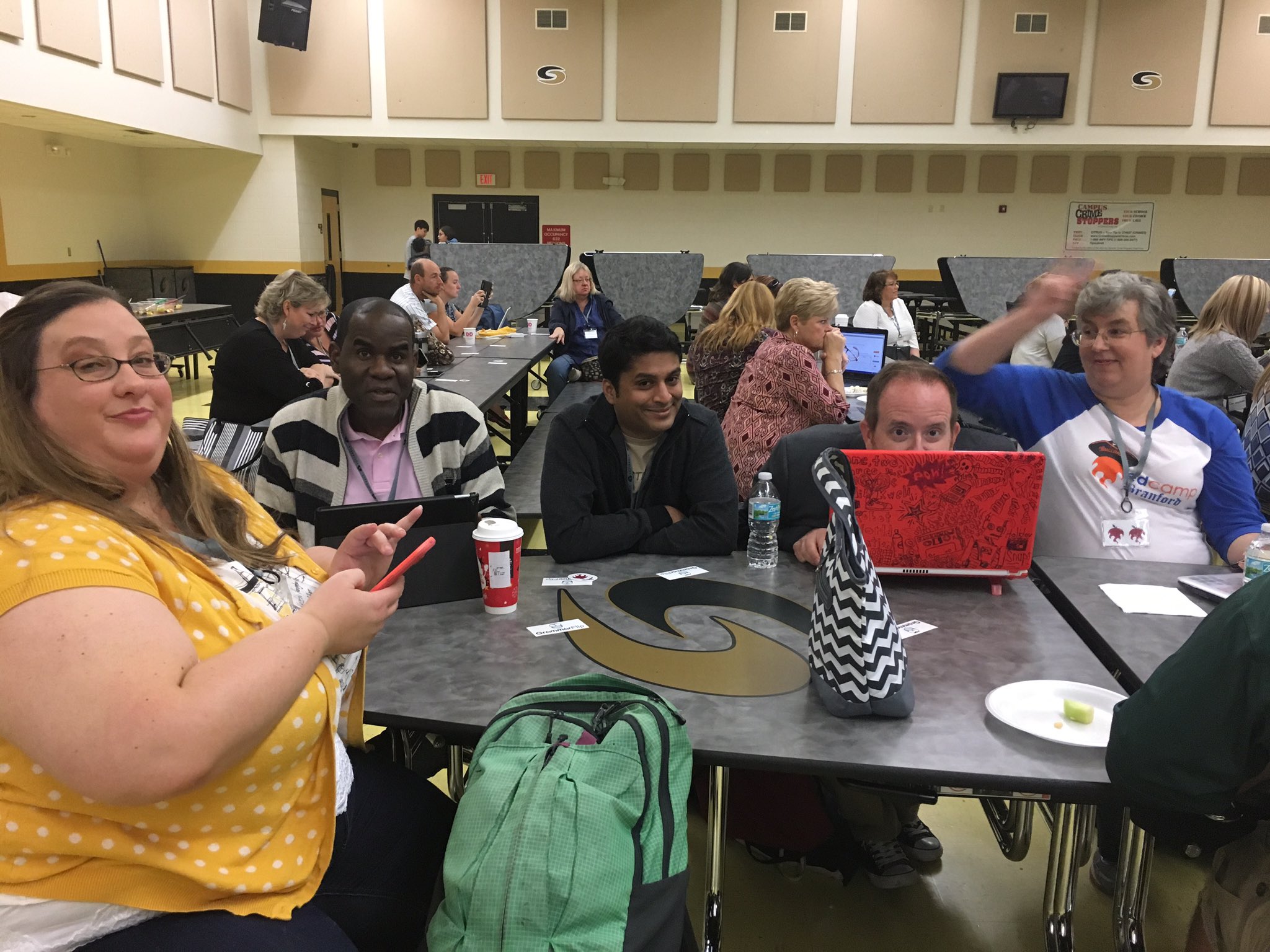
This is a candid photo of I along with friends at EdCamp Citrus over in Inverness, Florida. Another glorious experience learning about a variety of topics that aid in the development and longevity of our classrooms and student learning. It is always a fun time with this crew.
Social Media/Technology Boot Camp - 11/15/2016
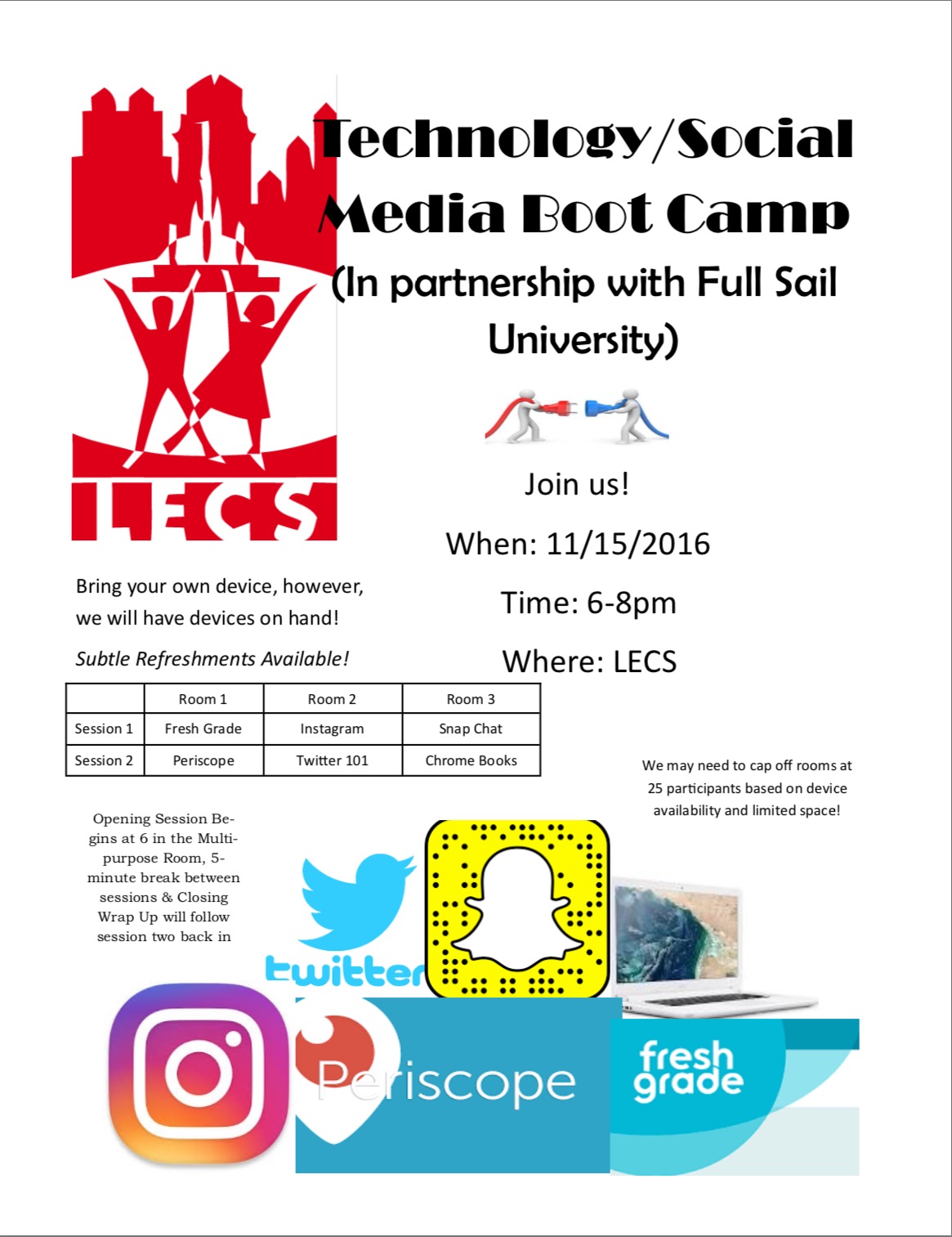 This was another first this year. I kept thinking to myself: How can we encourage parents to be more involved in their child's educational process as well as meet a need had by parents? Because of our newest partnership with Full Sail Labs, out of Full Sail University, this was the perfect opportunity to as they say "kill two birds with one stone." Full Sail Labs has partnered with us to increase the momentum in engaging students in the computer sciences as well as the arts, as part of the effort and an extension of the offerings we already provide at school.
This was another first this year. I kept thinking to myself: How can we encourage parents to be more involved in their child's educational process as well as meet a need had by parents? Because of our newest partnership with Full Sail Labs, out of Full Sail University, this was the perfect opportunity to as they say "kill two birds with one stone." Full Sail Labs has partnered with us to increase the momentum in engaging students in the computer sciences as well as the arts, as part of the effort and an extension of the offerings we already provide at school.
So, the idea of a Technology/Social Media Boot Camp came to mind, with a two fold purpose: to educate parents on the social media platforms that exist today and the ramifications of use, as well as to provide them with the knowledge of devices, programs, tools and applications that their children use in school. This would enable them to better assist at home, and provide an overall meshing of the learning process.
Google Forms allowed me to easily create an interest survey to be sent out to all parents at the school by our administrator. As responses came in, we learned exactly what parents were interested in learning and developed the boot camp around these ideas: chrome books, Periscope, Instagram, Snapchat, Fresh Grade and Twitter. These ranked highest among topics identified. The additional topics might be held for a future boot camp. We were able to have the boot camp on November 15th at the school and I was joined by two excellent educators from Full Sail Labs, to run the six 45-minute sessions, three happening concurrently. We had several parents attend and the follow up at the end of the night included expressions of gratitude for the knowledge gained and how each looked forward to additional technology boot camps.
The two sessions I facilitated were Fresh Grade and Periscope. As a Fresh Grade ambassador, I have learned a lot about the platform as it relates to individualizing learning and representing student learning in a variety of ways, not to mention the window it creates for parents into the classroom. I was able to create a mock class and guide parents through the usefulness of the platform as a learning management system as well as show them the inner workings. The parents were engaged and asked several questions about the viability of the platform. I had iPad devices on hand for parents to use to access the app although one decided to download the app on her own mobile device. Session two on Periscope included a greater number of parents and they learned about the operation of the tool and its appropriateness for sharing ideas and learning with others when they are unable to attend. Not only were they all impressed by its potential, several downloaded the application in the very session and began playing around in the sandbox.
We will send out a follow-up survey where parents who attended can document their learning. We will also send out information and tips to continue to develop their understanding. Finally, our goal is to have at least one more social media boot camp prior to the end of the school year. By such time, the word will really be out and we had several that were unable to attend the first event. It was a tremendous success to be enjoyed by all. I am grateful to my principal @charternation for having allowed me to go forward with it as well as the Full Sail Labs facilitators/educators for the awesome job they did presenting information.
EdCamp NABSE - 11/19/2016
EdCamp NABSE was the first Ed Camp that I've ever helped to organize. The picture below does not show everyone, but I will mention all who were part of the organizing team: Knikole Taylor (Leader), Kim Lane, Tammy Neil, Fran Siracusa and myself. It was great day out at the Tampa Convention Center and conversations were had by all.
Christmas Caroling -12/16/2016
I am grateful for having had the opportunity to take part in another of our 49 Acts of Kindness, caroling with a few of my students at the Beardall Senior Center in downtown Orlando. What a great experience it was to participate with them and showcase all of the talent that our school has, not to mention serve the senior citizens that interact within the building. Smiles decorated their faces as they watched the kids perform. We sang a total of six songs and all parties involved were overjoyed by the experience. There is a link to the YouTube video, if you care to watch and listen; The link is here.
News to be Shared on 12/29-12/30
Something great will be announced around this time that I was grateful to have taken part in. Stay tuned!
Final Thoughts
This certainly does not totally capture the year, but this post contains many highlights to all of the events that took place that have shaped me. I am grateful for all that has transpired and I am looking forward to the greater in 2017. Thanks for reading this post and I welcome any comments you may have. Mischief managed!
I have amended this post and added this. Tammy and Justin have been a great encouragement and "pushers," you know the ones who see the good in you and push it out. Please make sure you follow Justin Schleider and Tammy Neil (founder of FLedChat) on Twitter. These are phenomenal people. Justin blogs here and Tammy's writing can be found here.
You Never Know
“Don’t let what you can’t do stop you from doing what you can do.” – John Wooden
You may never know the story behind the why, you may never truly understand why you do what you do, but deliberate acts can transform the lives of those you interact with. I have learned some valuable lessons about why it is important to "BE." To "BE" requires action and sometimes this action requires more than a focus on curriculum.
Scene One - Back to the Future
Back in 2004, at the beginning of my teaching career, it was clear to me that the classroom was exactly where I was supposed to be. I was passionate, motivated and driven to connect with my students in order to have maximum impact. I started out teaching third grade at a school here in Florida and doing all that I could to make learning fun and exciting for all students. I believed it then and I believe it now that 75% of my job is motivation and once I can be successful at that, everything else is easy. After that year of third grade, I had the opportunity to loop up to fifth, with a chance to teach the students again that I'd had in third grade. What a fortunate thing it was as they already knew me (kids and parents) and I was overjoyed with the idea of teaching these phenomenal students again.
One student in particular, was facing some behavioral challenges which began to impact his academics and I saw quickly that the path he was headed down was not a great one for him, particularly only being a fifth grader. In essence I thought that I could help him and needed to before he left for middle school. So, as a means to positively reinforce, encourage and support him, I'd formed a checks and balances system with him, occasionally having him eat lunch with me, just so he knew that someone cared about him. Now he has a loving and supportive family, but sometimes that "outsider" can have much more of an impact, as I have experienced on numerous occasions.
It was at that time, that the bond formed and he would feel comfortable coming to me when he had problems or challenges, despite what they were. I'd developed relationship with his family as well and after some time, made a plan to come over and help with homework and character building, as a positive influence. The relationship grew stronger to the point where I was essentially welcome to come around at any time and the uncle/nephew idea took shape. He needed me and I knew how to help him and though the challenges were not solved overnight, he was very receptive to the insights I had and respected me, not only as a teacher, but now as his uncle. Years went by, and communication was not as consistent, but we did manage to keep in contact. Life challenged him in ways that he may not have been prepared for, but the benefits of what happened in his 5th grade year were far-reaching. Drawing on that, I made a point to reach out and he did the same, and though life has not always dealt him a good hand, he is alive, healthy, and living. He made the statement recently: "If it wasn't for you being there, I would have been locked up or dead." Now when you hear that from someone, surely you can't keep a straight face. After all I'd been through with him, I was emotional. It was the bold-faced truth that impact and influence can go a long way and those potential events were the last thing I would want to happen to him. He is now 22 and I make it a point to go see him and talk to him as much as possible, but imagine if I had not taken the time?
"Every child you encounter is a divine appointment."
Scene Two - This Year
Another interesting encounter took me by surprise. More recently than the first, I learned that this next student had challenges with confidence and really put himself in a corner because because of how different he'd perceived himself to be from others. Kids face very real challenges today and just imagine if they had no one to turn to. Having recently had conversations with his mom, she communicated to me that his confidence has tremendously increased on account of him being able to interact and glean from me. I am completely humbled by the idea and even more to the point of how real this conversation was as she went for the tissue box, because she couldn't fight the tears that bombarded her eyes. I had to fight my eyes so they wouldn't participate, but I couldn't help but be moved by the idea that this year has been so transforming for this student, and we aren't even at the halfway point yet.
"Children are the living messages we send to a time we will not see."
Scene Three - This Year #2
Another mind-blowing example of impact and influence and the benefits of connecting with students is life in transition. It is never an easy thing to go through transition, and I have learned that it is in transition that we make most of our mistakes, taken by the discomfort and perhaps wavering emotions. I recently learned, again in conversation with a parent," that if it had not been for me, then and I quote "I don't know what my child would have done." Moving from one school to another school, though beneficial to the child in the long run, can be challenging, with having to leave old friends, acclimate to a new school, new teachers and a new set of expectations. What I did not know is the role that I was playing in simply connecting with students, attempting to make learning fun and being who I am. I found out that the student had been going to counseling since he'd started at our school because he came to his mom and said "I am depressed." Now, things have changed. He is a happy child and his mom said, he loves my class. Again the tissue box being less than five feet away was definitely beneficial and while she apologized, I said no I completely understand. Just imagine for a moment that seeking to develop a connection and deliberately going after impact, can transform a life. It is worth it!!!!
Reflections
The first group of students I'd ever taught are now in college and/or working part-time or full-time jobs and living life. Many I still make it a point to keep in contact with and I take every opportunity to interact with them, check on them and offer support or advice wherever I can in this tangled web of life we weave. Why? Well I realize that life can be quite challenging and I further understand how life can be made more livable when you are surrounded by those who support you and when you actually feel that support. In the case of scene one, mentioned above, this kid is my nephew and I am his "unk" as he so eloquently puts it. There is not one thing, person or idea that has the power to cause either one of us to feel differently about it. To this day, outside of the color of our skin (and maybe not even then, you would never know that the cultivated relationship was not biological. In fact, his entire family knows who I am and have frequently offered gratitude for the strides made to be there for him.
These are only three examples of stories I have shared about the benefits of connection with students and how what we do can have long-lasting impacts. I'd shared with one of the parents above about the number of things I do or am involved in and at first, she questioned if I'd had a life. I immediately responded to her and said I know that kids need advocates and opportunities to learn and explore and have experiences and I believe that if teachers like me didn't take the time, make the time and use the time we have to provide opportunities for students, then we limit their ability to grow and develop. What I mean is, we increase that ability when we avail ourselves to them. She was blown away by my response. She asked if I lived at school. :) It was funny but at the same time, a perfect opportunity to express the need for dynamic and involved teachers to act deliberately to impact student "years," but really student "lives." You never know.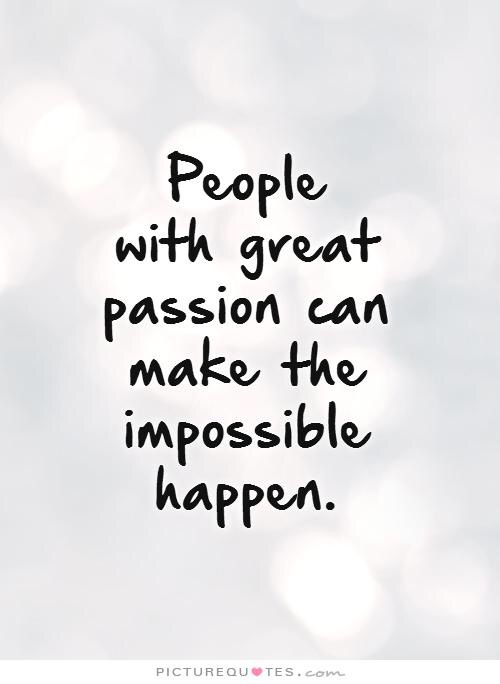
Is it Just a Job?
[wpvideo n7D0izhp]
I am curious about what came to mind when you watched that little clip. Consider also how what we do compels our students to think, reach and synthesize new ideas or new ways of looking at something they have known for some time? I submit to you that it is more than just a job and honestly, it has always been. Have we at some point, gotten it wrong? Perhaps, but one thing is certain; students need to be "reached." We may not have eight arms, and our arms may not physically be long enough, but in order to reach these students, who are all different, we must understand that what we do is not simply a job, but it is in fact a movement. It is the decision to have impact. It is changing the world as we know it.
The Desire to Please
When students begin to see the value that you have as an educator or parent and the knowledge and wisdom that you have gained that will aid them in development, not to mention the expectations that you have of them, they aim high. One of the greatest realizations I have experienced as an educator is that students will reach as high as you expect them to reach. Perhaps I am not referring to every student, nor am I insinuating that everyone's expectations should skyrocket. What I am saying is that I wonder how many students underachieve because no one expected any more or any greater from them. Perhaps no one challenged them to reach? And in the reach, just maybe they won't make it the entire height of expectation, but they are learning to reach. Students are resilient and desire to please, so why not give them something to aim for?
The Courage to Take Risks
Recently, I had a talk with a couple of my students about their spelling lists and the two students in question are highly intelligent as well as diligent in their pursuits. We talked about how I use spelling to reinforce the writing process, particularly editing. Further we talked about the relevance of being able to have spelling words that challenge you. I use leveled lists that I create and based on performance, students can advance to higher lists. I do this because I believe that if you can challenge students, it can reinforce the belief you have in them to accomplish the task. We challenge students because we realize the ability they have. We challenge students because we want learning to be an experience, not an assignment. We challenge students because it keeps them motivated about learning and increases their desire to continue take risks. Risk-taking is important in education, and also in life. What is life without risk? Risk implies that we could either not meet the target we shoot for and learn from the experience, or we could hit or exceed the target. However, if we are unwilling to take risks, we may forfeit the opportunity to seize the moment(s). These two students, well one provided the example for the other, decided that they wanted to take on two different spelling lists at the same time.
Now let me be clear, I challenge these students. One of the lists had 30 words and the other had 35. These two students decided to take on 65 words in two weeks. Not only did they perform admirably on both tests, they were not at all stressed out by the experience, but rather motivated to do it all over again.
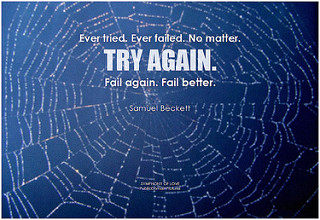
The Resilience to Try Again
What happens when things do not go as planned? It is likely in life that this very thing will occur and perhaps many times. We learn from our experiences and our mistakes and clearly, if we succeeded every time, then there would be no need to try harder, plunge deeper or apply more effort. We develop as we endure the good, the great, the not-so-good and the ugly. But perception in this regard, is everything. When I look at the great, do I look for ways to make things greater? When I look at the good, what could make it great? When I look at the not-so-good, where did I come up short? When I look at the ugly, I might say "I have another opportunity to try."
I believe that we model this for kids and through our example, our kids or students can develop the lifestyle of perseverance and determination. Sure, it is possible to succeed on the first try and I am inclined to believe that some will, but what of those that are not as fortunate? What about the rest of the population of students who may need that third, fourth and fifth opportunity? There is much to be said for those, that in the face of adversity, choose to persist and not give up, despite how hot the fire is, or how high the stakes are. This is not to take away from those who achieve what they desire or are focused on, the first time. If we truly are to reach the masses, we must understand that the focus is on getting there. We have heard lots of discussion about growth mindset and the perpetuation of desire and progression and the understanding that we should use every opportunity and experience, good or bad, to grow. My brother, who I love a great deal, stated that "we win and learn, not win or lose." As long as we play, we learn. (Thanks Justin Schleider) What a powerful statement rendered in such few words. We challenge each other, my brother Dionisio and I, to reach and to form right perceptions, be individuals of action and have the will to progress and never become stagnant. "When setbacks occur, consider the possibility that they are a setup!" Resilience to try again when you know the last time wasn't as you would have liked, says much about one's character. Don't stop trying, because there is a reward within the persistence to try, AGAIN.

Kids Really Do Deserve It
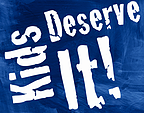
Kids Really Do Deserve It - Part One
I must say that Todd Nesloney and Adam Welcome really have set the stage for what we should all be making strides to do as educators: to more completely assess, identify and meet the needs of the students that we come in contact with every day. What's more is that as educators, we may be the highlight of a student's day, week, or childhood even. So the question is, do kids really deserve it?? If you really believe that they do, how do the principles outlined in the text of 'Kids Deserve It' become a practical approach in the classroom? What do these activities, methods or actions really look like and to what degree can they have a positive impact on students, not just physiologically but mentally and emotionally? We will discuss these ideas here today, because what and how we do what we do will decide to what degree our students are made better, believe in themselves, and encouraged to take on the world, because they really do deserve that opportunity.
Celebrating Successes
One of the amazing ideas captured from the text is the idea of celebration. Who doesn't like a celebration? More to the point, who doesn’t like to be celebrated? Kids deserved to be recognized for the positive things they do and the strides they make to do the right things. So often we are quick as educators to identify what is wrong in a certain situation, but we are not nearly as quick to accentuate the positive. I have always believed that we should positively reinforce the behaviors, whether academic or regarding conduct, that we want to continue. I considered how I could highlight positive behaviors in the classroom, anything from being kind to others to demonstrating leadership skills and helping other students. I decided to publish the names of the students being celebrated in an area where others would quickly notice. Next to each student’s name, I identified the positive traits, actions or behaviors that I wanted to “celebrate.” I brought in donuts that day (and students were super excited about eating something unexpected and sweet) as well and for the first time ever (that I can remember), the room was completely silent, all were attentive because they were seemingly all eager to hear the positive comments that I had to make about the students identified on the board.
Along with the visual displays of student success and celebration, I wanted to showcase these students in a medium where parents would also know their students were being celebrated and the reason(s) for it. I use an application in my classroom, which is also a web page, called Fresh Grade, which I am now an ambassador for. As an ambassador, I am afforded the opportunity to brag about its e-portfolio features as well as user-friendliness for teachers to be able to communicate with families about progress. One of the features within the application is the ability to share videos and audio messages and forward it out to parents within the three classes that I teach. I recorded an audio message of about three minutes where I greeted all parents and begin to talk positively about their student(s).
Immediately after posting the audio to student accounts, the comments rolled in from parents who were blown away by the idea. In addition, I shared the idea (and student list) on my Twitter and Instagram accounts with other educators. The students were grinning from ear to ear at the thought of knowing that their greatness has been made public. From that point, I paid very close attention to students. This all started on Thursday, September 22, 2016. What a transformation in behaviors for students since it started. Students began holding doors as visual representations of explicit kindness and help to others, helping each other with things in the classroom, and being intentionally respectful of others. When other students see these displays, they are inclined to follow suit (whether for the recognition or not). They are learning a positive behavior, and the more it is reinforced, the more it will become a habit. Even more interesting was the intentionality within it. It wasn’t let me do this so that Mr. Gainey can notice me but let me do this because I realize that it is a positive act, and positive acts are always recognized and rewarded, even if not by me.
From now on, I will be looking for students to celebrate each week on Thursdays. I have challenged students to be on their toes, because I would be watching, and not just while in my class, but all day long. I even threw out an additional challenge: I empowered students to see the positive in each other. I encouraged them to look at their peers and if they see something positive that we should celebrate, we would add their names and the details of their positive performance to the list of celebrations. Now we have “Celebration Thursday's,” and students are looking forward to this and are motivated to do well.
Using Fresh Grade to Add Something Fresh to the Grade.
This is the second year that I have had the pleasure of using the Fresh Grade platform in my classroom. It all started out as a desire to connect home to school, as well as maximize time and become more efficient in my teaching processes. Last year was the pilot year, and let me say that I am grateful to have the liberty to try out new things, as the sole benefit of it all is the students. That focus should never change. Within Fresh Grade is a student e-portfolio, a grade book as well as a communication medium and a way to continue to track and monitor student growth. I would consider this a non-traditional platform because through it, I can maintain a focus on students as well as differentiate within it. It's design allows me to keep my instruction student-centered. Fresh Grade has given me the ability to do the following things:
- Focus on Students
- Document Student Progress, observations and anecdotal records
- Add work samples in a variety of ways (documents, videos, pictures, audio)
- Send updates/announcements to parents
- Encourage three-way discussions
One of the even greater #EduWins is the idea that kids enjoy being able to see their processes and products, as well as ask questions or comment on particular work products throughout the year. One of the things I try to instill in students is that the product is important, yes, but that the focus should be on the process and all of the learning that has transpired. The learning trumps the product any day and Fresh Grade allows for that learning to be captured and communicated to parents in a way that is easy to access.
Speaking of access, Fresh Grade is available through the web page, as well as in an app version. The app is available on smart devices and tablets, whether android or iOS. This allows parents to be notified as items are posted, giving them the opportunity to see into the classroom immediately. In fact, with the app, I am able to communicate items to parents long before their students arrive at home and by so doing, they are better informed and able to help extend the learning by means of a school-to-home connection. The platform includes access for teachers, parents and and students.
Students and parents are only able to see what applies to them, eliminating privacy concerns. As a teacher, however, I am able to tag students in photos or videos, as it is relevant to the student.Within the grade book also, I am able to tag students in assignments they were tasked to complete. In other words, if I am differentiating and not all students have the same assignment, only what the student was responsible for, will show up in his or her feed. I am now a Fresh Grade champion/ambassador, as I completely support its purpose in education. Best of all, it is being offered to teachers for FREE! Recently, I was honored to be one of two teachers featured in a webinar on best practices in grades 4-8 and how this platform served to enrich teaching and learning in my classroom. Not only has it done that, it has increased the authenticity of the learning experiences and connected parents to the learning, as well as encouraged profound conversations between parents and their students. Go Fresh Grade! Follow @FreshGrade on Twitter!
Students Build a Blog
Introduction to Student Blogging
Class Press is a blogging platform that I have tried with students for the first time as of Wednesday. I found it after a google search because of the reality that technology is not going anywhere and I wanted to integrate technology into my ELA classroom in a new way. After having begun to blog as an educator, I quickly understood the relevance and value that blogging had. My first blog post happened in May and I’d learned about the whole blogging thing through interactions with other educators via Voxer and Twitter. Users of Class Press can add pictures, video (for example, from YouTube), polls as well as special effects to accompany their blog posts.
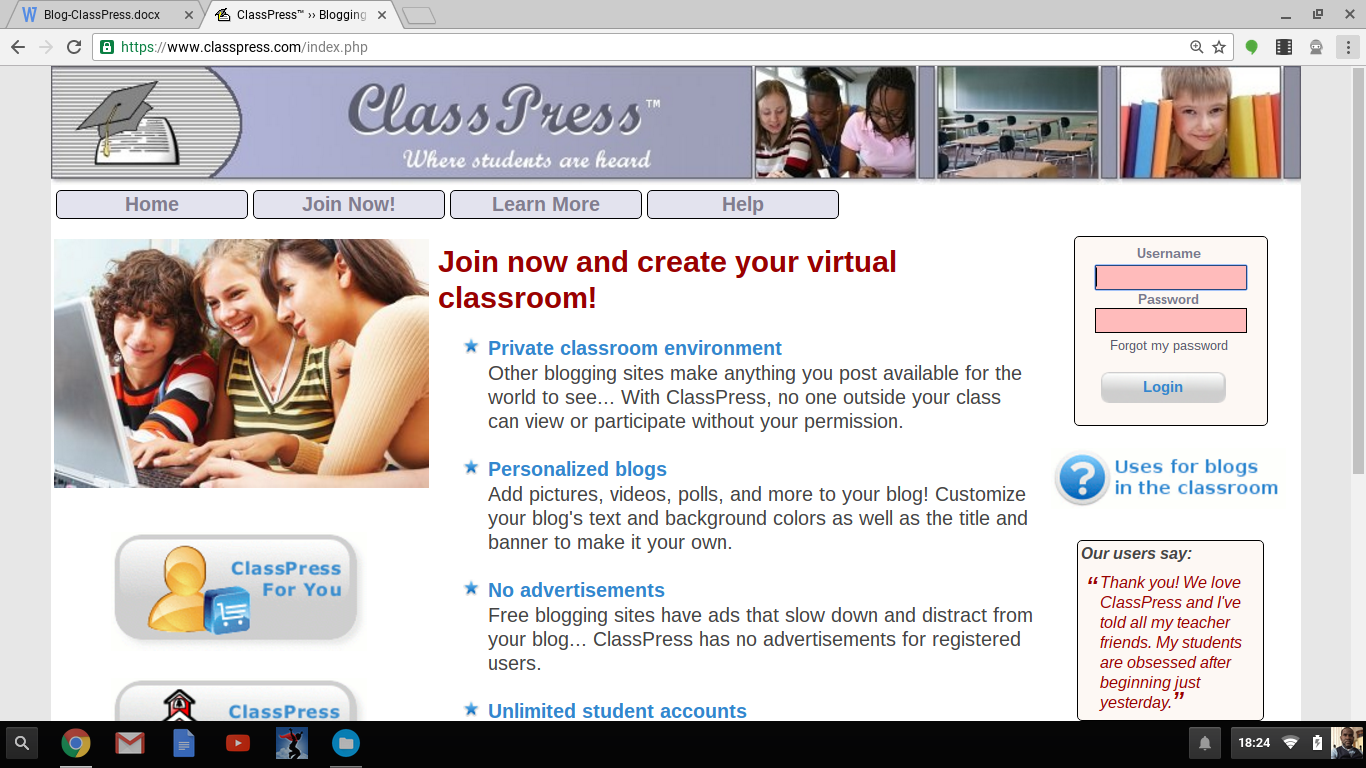
Personalizing Blog Pages
Within the Class Press site, students can personalize their blog page with an avatar, a color scheme for the background, titles and body of text, as well as a banner along the top and the ability to name the blog page. Many students have developed themes associated with their likes and interests. Just as student writing can reflect the individual who wrote it in unique ways, it is interesting to see how these personalized pages are reflective of the personalities I have come to know.

Commenting on Posts
On the day of introduction, students were very eager to learn about the ins and outs of the blog site. In fact, the idea of a blog was motivating by itself. In many ways, students have become so accustomed to writing in the traditional sense, that they were intrigued by the idea to have their writing be reflected in a different way. An integral feature of the blog site is that students can "be heard" through their own blog posts, and also have the ability to "be heard" through the comments, questions and feedback on other students' blog posts. It is important to note that students must be introduced to ways of responding to a post and also responding in an appropriate manner. I have used student examples, with their permission as an impetus to draw traffic to their blogs as well as highlight phenomenal work.
Initially many students started posting short, choppy, random thoughts and ideas. Perhaps they were unsure of how to proceed. I allowed this to occur because there is much to be said for discovery and the construction of knowledge. As we continue to move forward in the year and they are able to interact with each other through this site, they are able to learn of the variety of approaches to writing, read others' comments through a perpetual learning process.
Educator Blog – Student Blogging – Community of Learners
Building Community
One of things I had not considered was the impact that introducing blogging to the students in my Grade 4-5 ELA class would have on student motivation. What a breath of fresh air to see how students began to learn about each other, compliment each other and be able to see the strengths and talents that others bring to the table. I listened to the oral conversation with students as well as the written exchange through the Class Press site and made an interesting find...students enjoy interacting with one another, as well as interacting with the teacher in a forum, if you will, of a different kind. They know that this can act as an extension of the classroom and that often I will respond to their posts, which would serve as continued motivation and even validation for them.
An additional aspect of the site is that educators who use it are able to connect with other educators, despite their geographic location, to become "buddies." As a result of this, students in both classes would be able to comment and respond to eahc other as a means to globally connect teachers and learners, as well as continue to grow through the feedback students are able to give and receive.
Reflections
All in all, I can say that this site was very easily integrated into my ELA teaching and learning, as an alternative to traditional methods. No, it does not completely relieve students of the responsibility to write manually, but it does involve them in the use of technology as well as affirms the reading and writing processes. Students can always edit and revise their responses after they have been approved for posting by me, which reinforces steps three and four of the writing process. Also, a PDF document can be printed to contain a typed record or log of student blog posts.
I will continue to use Class Press for the following purposes:
1. Student responses to reading (Students can provide summaries and reflections on their reading as they read for a variety of purposes and from a variety of genres. They are sharing their knowledge, using reading skills and growing as readers and writers.)
2. Responses to Guiding Questions (Guiding questions are used to frame the day and as such, students can respond to these guiding questions as a review of the day's learning.)
3. Student sharing of personal writing or thoughts (Students can share with me and their peers any personal writing or thoughts they have about life, current events or a random topic of choice.)
4. Flipped Classroom (Based on its potential, I can post links to a video or audio that I may create through the "ShowMe" application on the iPad or using "Explain Everything," another great iPad application, and students can respond to it, by placing their thoughts, comments, epiphanies or questions on their blog page.)
Class Press is definitely worth looking into as we seek to be progressive educators.
The Cause for Collaboration
As mentioned by in Concepcion, Holtzman & Ranieri (2009), "Becoming a part of a community of scholars of teaching and learning who make a culture of courageous innovation is crucial to long-term impact on student learning" (p. 5). What a powerful takeaway here. I have worked by many educators who lived alone on an island and rarely interacted or shared with others. I believe that there was a time where you could get away with this, but I also feel that times have changed so much so, that we can no longer operate in the same manner and achieve the same results. The rumblings of Piaget are captured within this text, in that "Engaging in open, idea-driven speaking and listening allows members of a group not only to borrow ideas they hear, but to internalize the way others think through ideas, consider assumptions, imagine possibilities, options, evaluate details, and select directions" (Concepcion, Holtzman & Ranieri, 2009, p. 5-6). Understanding how to collaborate is very important, however, more than knowing and the process of collaboration, "success (within collaboration) is more likely to be determined by and dependent on the motivations, commitment, and the sheer time and effort invested by those responsible for carrying out the vision" (O'Neil, 2013, p.68). It makes total sense that the longevity of the follow through is really where the emphasis needs to be placed. Why has collaboration become such an essential tool? This is not only for educators, but students, as well as other professionals across disciplines. The thought that resonated most was that ultimately, the jobs that we do are designed to be able to reach the masses, and impact individuals that are of diverse groups. Keeping that thought in mind, it is through collaboration that we are able to get the most bang for your buck, gather a multiplicity of perspectives and angles and ultimately be more impactful in what and how we do. Collaboration is for the benefit of all (Fitzpatrick, 2011), as identified even in the veterinary business, and how much more as an educator, when decisions are made that are crucial to outcomes. Collaboration must happen between doctors and veterinarians even, in order to provide proper care to animals (Fitzpatrick, 2011). More to the point that societal changes happen every day and the decisions surrounding whether something this ethical or moral or even feasible, is an important part of practice. It is necessary to point out that "Collaborative relationships are not all alike, and different arrangements are needed to serve different purposes and require varying degrees of investment of people, time, and resources" (O'Neil, 2013, p. 67). Equally important is that the key(s) to success "begin with understanding how the world is changing and embracing certain guiding principles to shape the nature and scope of the partnership to ensure that desired--and shared-- goals and outcomes are achieved and, when appropriate, sustained over time" (O'Neil, 2013, p. 67). When the goals of an organization, school or business are shared or are common, then collaboration appears the likely resolve.
Jason Perez discusses the typical sharing of the parking lot by educators and nothing more that tends to happen at schools, but relies four ideas to help to build collaborative efforts coined by Parry Graham & William Ferriter: forming, storming, norming and performing. When an educator has worked for so long leaning only on themselves, collaboration can be a challenging idea to grasp. However, this does not take anything away from its benefits. I've heard the statement a few times that "we are better together." As noted by Dr. Perez, teacher attrition is a problem due to the increase in expectations and responsibilities, and feeling like you are out there alone. But consider the antithesis. Consider the possibility that there is another teacher out there waiting to collaborate with you. Perhaps there is some risk involved, because it requires that you step out of your comfort zone. However, the benefits, especially long-term, outweigh the costs .The more I think about that, the more I understand that it is not an example of losing credibility, but rather knowing that when you are able to strengthen the ties, the impact, by nature of "together" becomes a greater one.
References
Concepción, D., Holtzman, M., & Ranieri, P. (2009). Sustaining student and faculty success: A model for student learning and faculty development. International Journal for the Scholarship of Teaching & Learning, 3(1), 1-10.
Fitzpatrick, N. (2011). Encouraging collaboration for the benefit of all. The Veterinary Record, 169(11), 287. doi: http://dx.doi.org/10.1136/vr.d5015
O'Neil, E., H. (2013). Collaboration--for whose benefit? Journal of Nursing Education, 52(2), 67-68. doi:http://dx.doi.org/10.3928/01484834-20130123-10
Committed to Continue
What I started ten years ago (The Educator Journey) was important then, but has graduated to an even greater relevance in today's society. We have pathways to tread. We have doors to walk through. We have lives that must be changed. The only way to ensure that we leave no door unopened, no pathway undiscovered, and no life unchanged is to be committed to the task at hand. What is the big idea? Do we want to develop individuals that are very good about navigating through a test, being able to mark answers down to satisfy a test maker? Do we want to build students that come to school out of routine or being made to come? Are we content with the limitations placed on students who may not be able to perform well on standardized assessment measures? Lastly, are we satisfied with the status quo? Are we content with filling the mold rather than creating it?
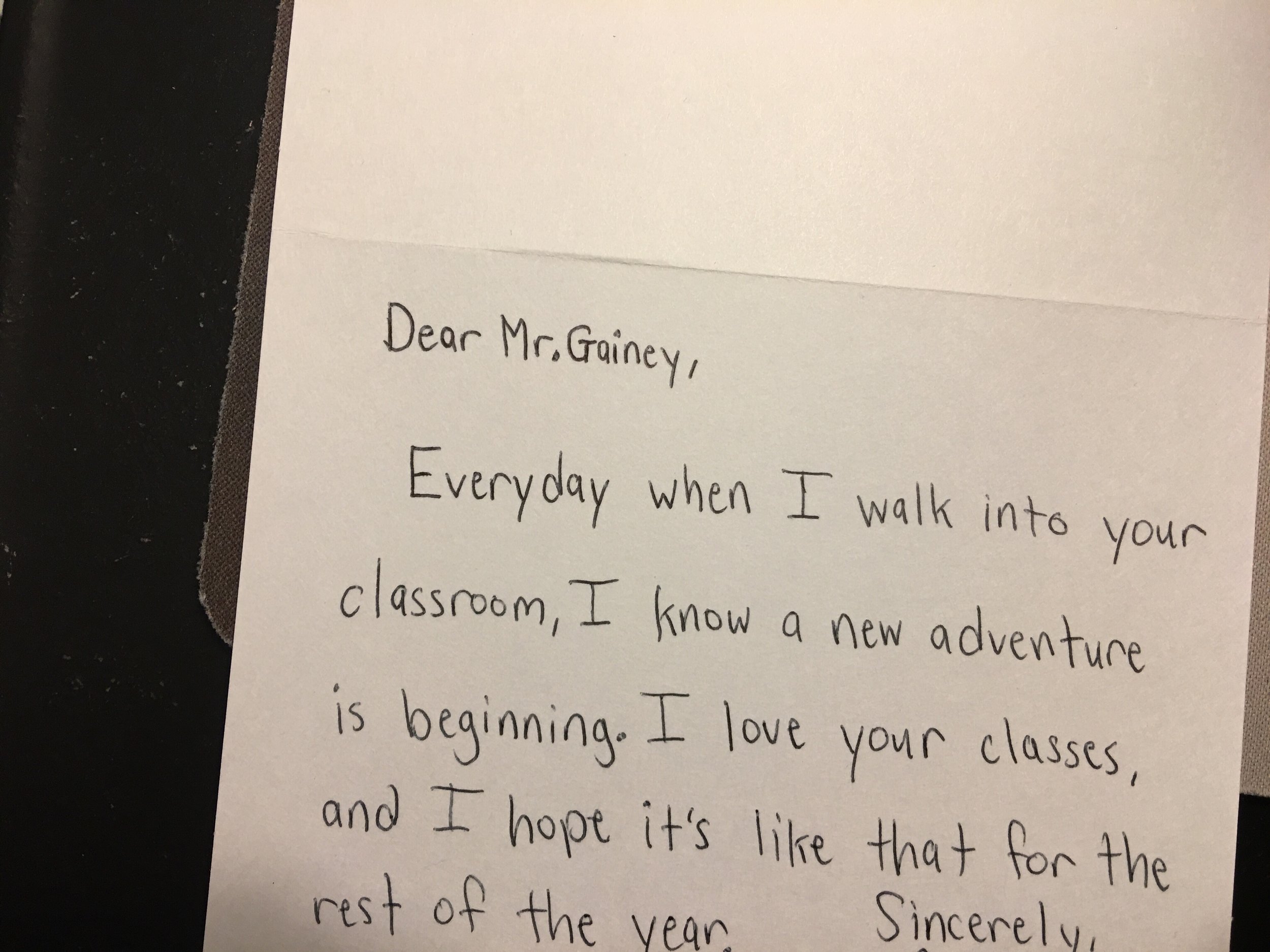
Pictured above, is an example of what I experienced last school year with a student, one of the best and the brightest (I tend to teach students to say this about themselves to at some point, begin to believe it and demonstrated it). The student said it at one of the most random times, unexpected, but it made my day. Why? Well I believe that we can cultivate the kind of classroom environment and even school climate where students cannot wait to arrive at school, talk to you, learn, engage and interact. Likewise, I believe it is possible to get students so excited about learning that they'd rather stay with you than go home at the end of the school day. What effect would it have on teaching practices if we were able to feed off of our students' motivation due to their expectation of the unexpected as they passed through the thresholds of our classrooms?
I get excited about learning in the classroom and I have experienced how that alone can perpetuate learning for students. They watch. They see. They do. I teach grades four and five and students need to see models. They need to see examples of what to do and not to do. Often I use myself as the model. There are times where I will do the "wrong" thing or provide the "wrong" response on purpose, to give students an opportunity to call me out. I don't know why, but they are so excited to do this!! But what they do not realize is, that I am putting myself in the seat of a student in order for them to learn from something I did or did not do. It may be spontaneous, but it always connects to some principle of learning. So, students learn from me and are empowered at the same time.
Are you committed to continue? Are you committed to see students break the mold or create the mold rather than simply fill the mold? I am convinced that students, when given high expectations, will take on the challenge and put in the effort to meet it. I am crazy enough to believe that if we, as educators, are committed to continue, then our students, by nature of connection, as well as learning from what they see, will also develop some semblance of commitment to learning. Not just learning either, but approaching every learning task as an opportunity to become a better them. Limitations exist. But so does opportunity, opportunity to do all you can, while you can, as a commitment to continue.


